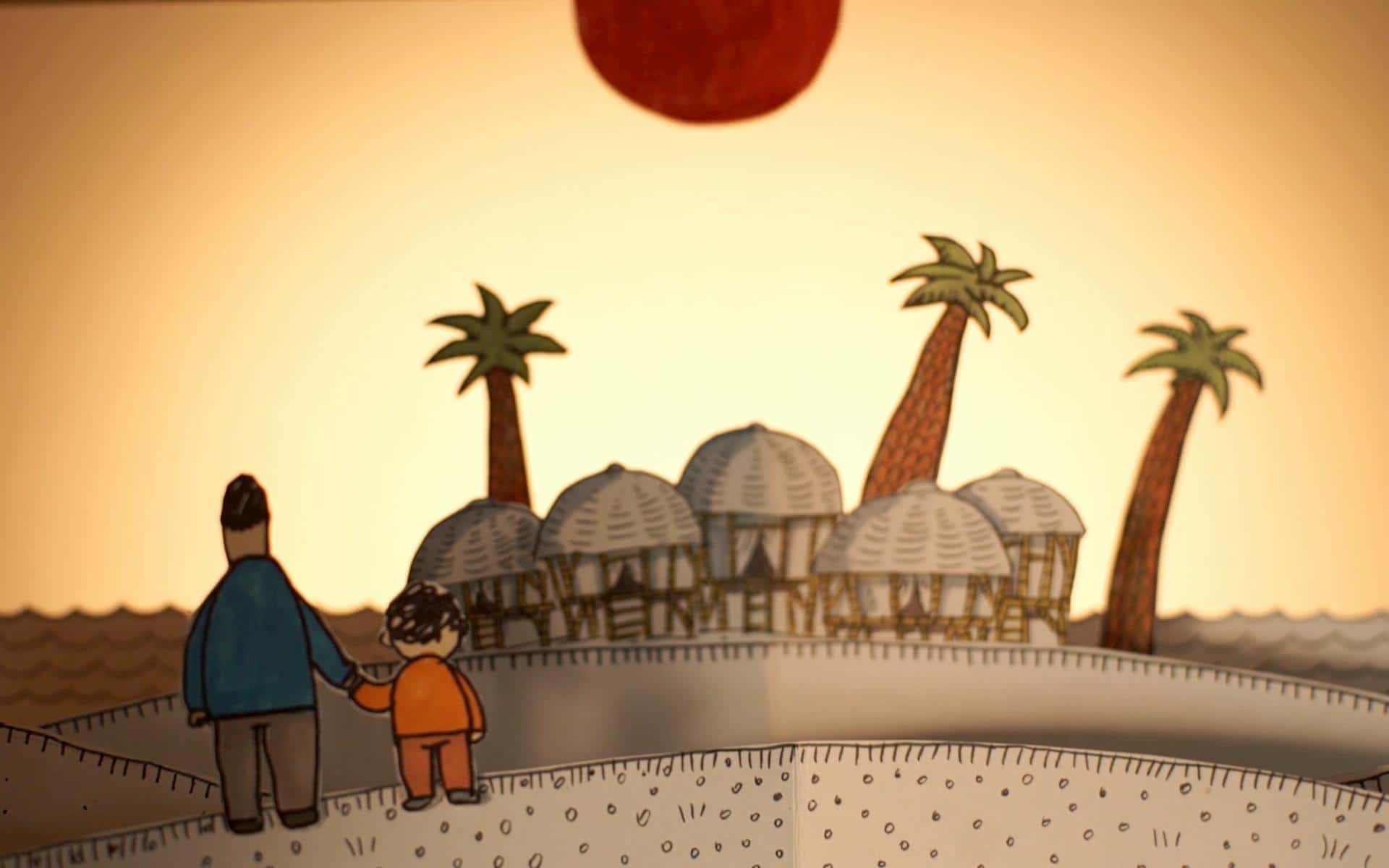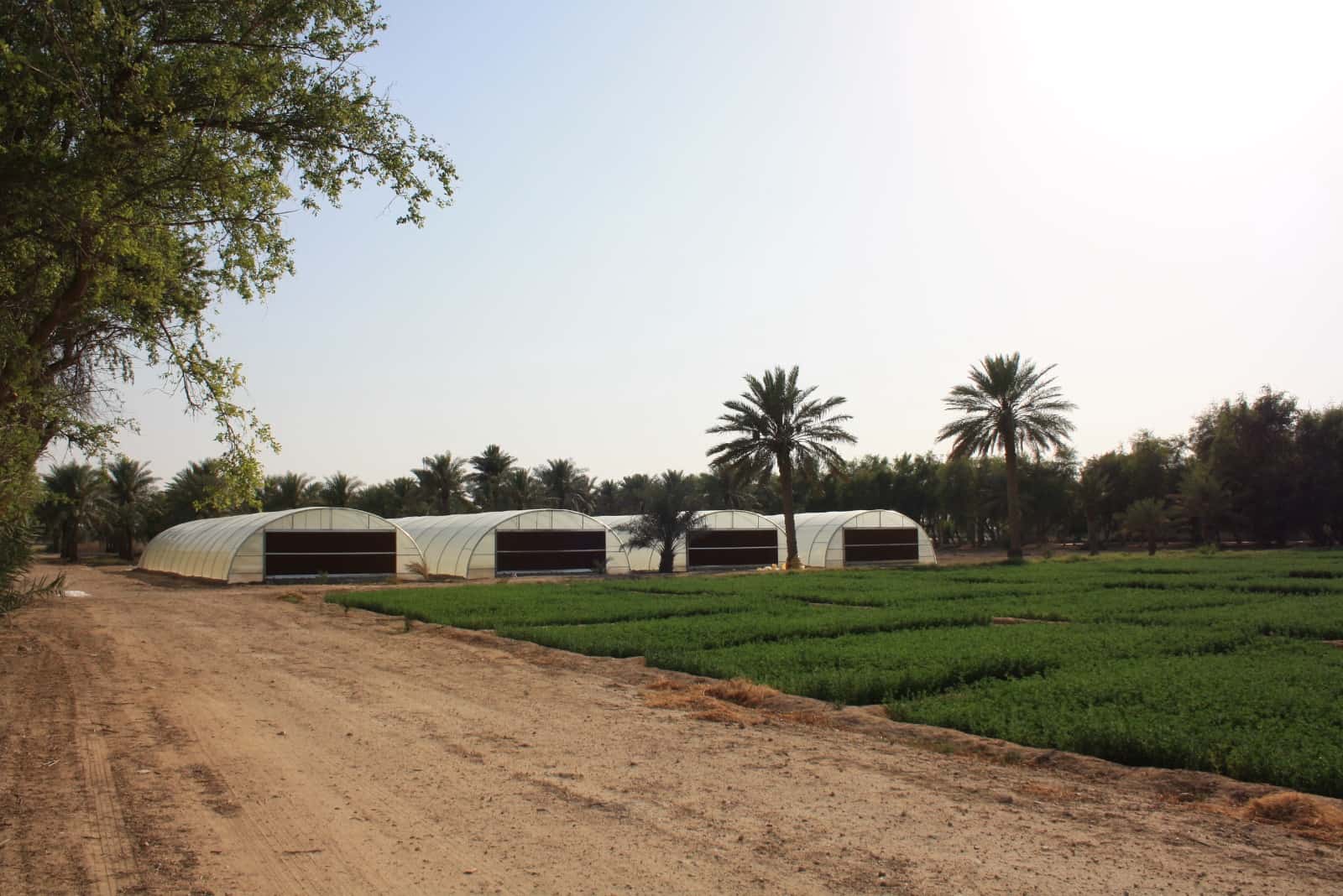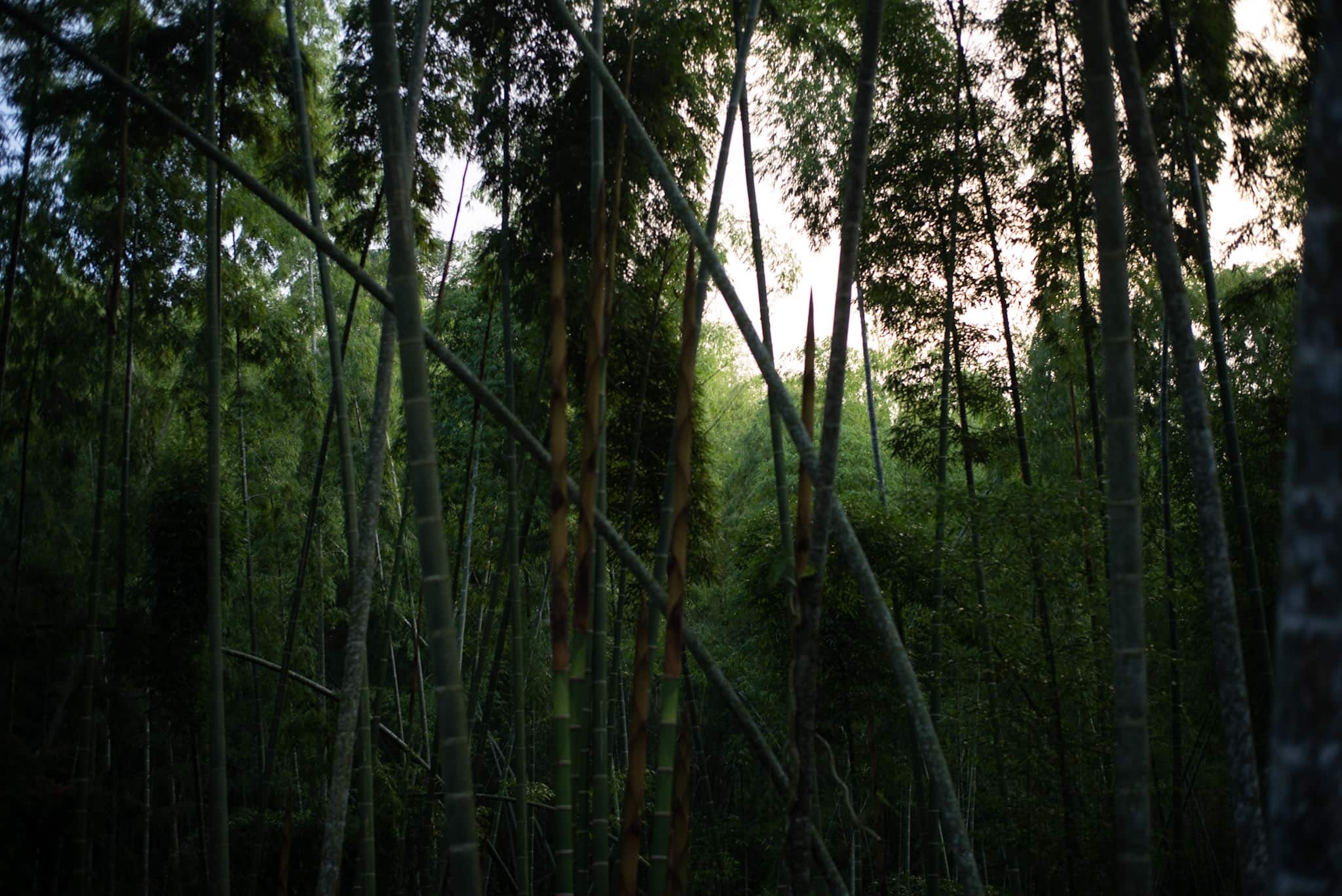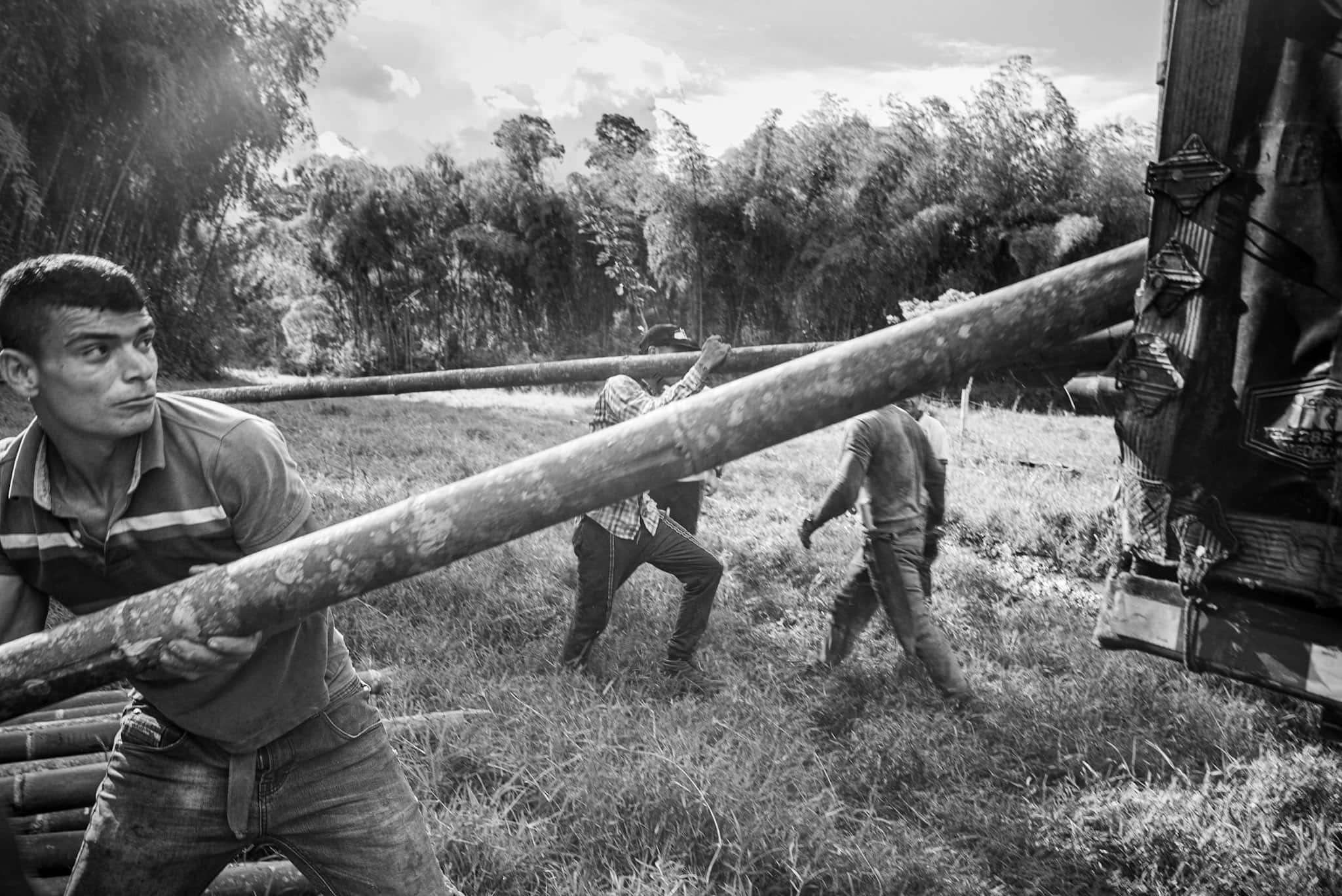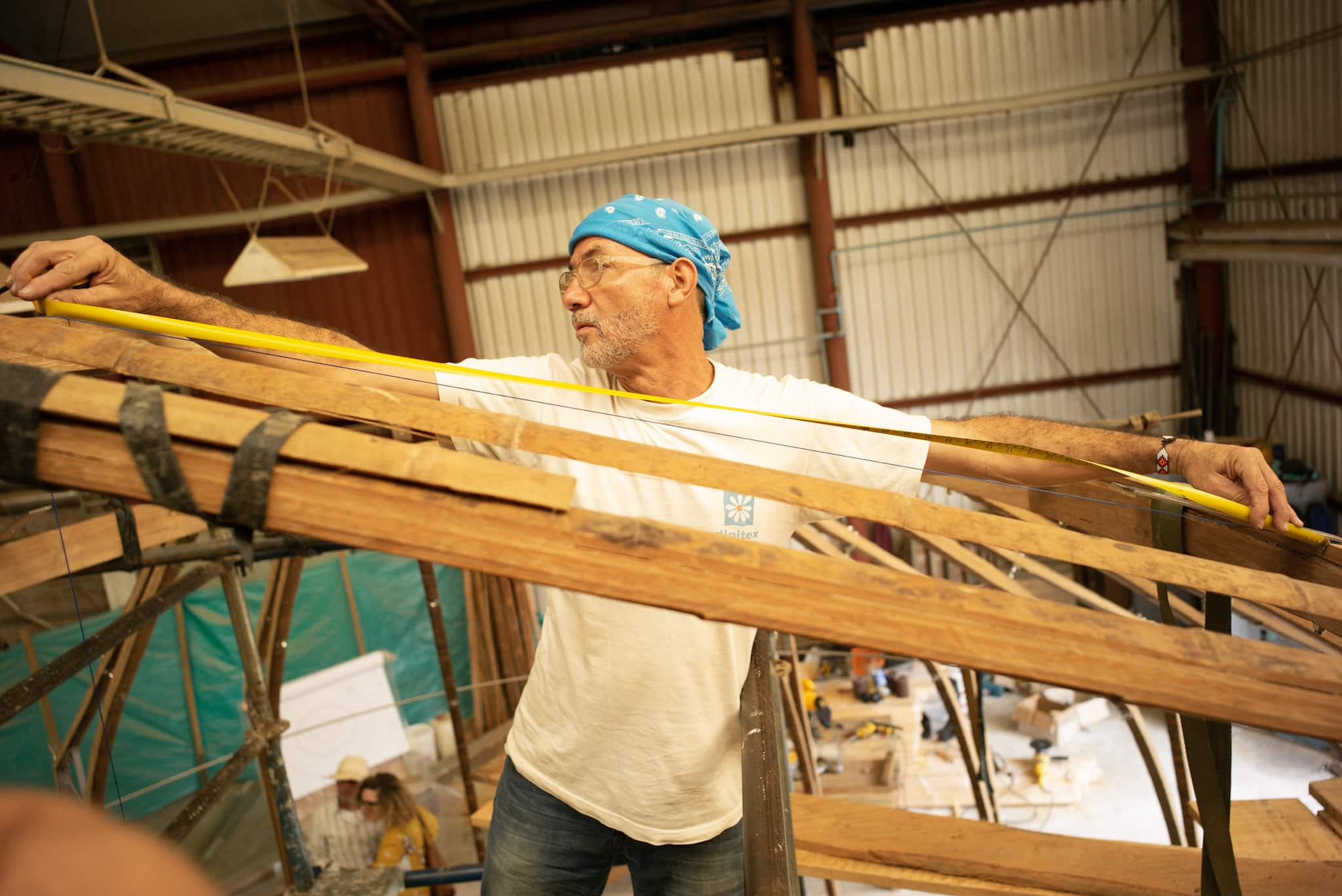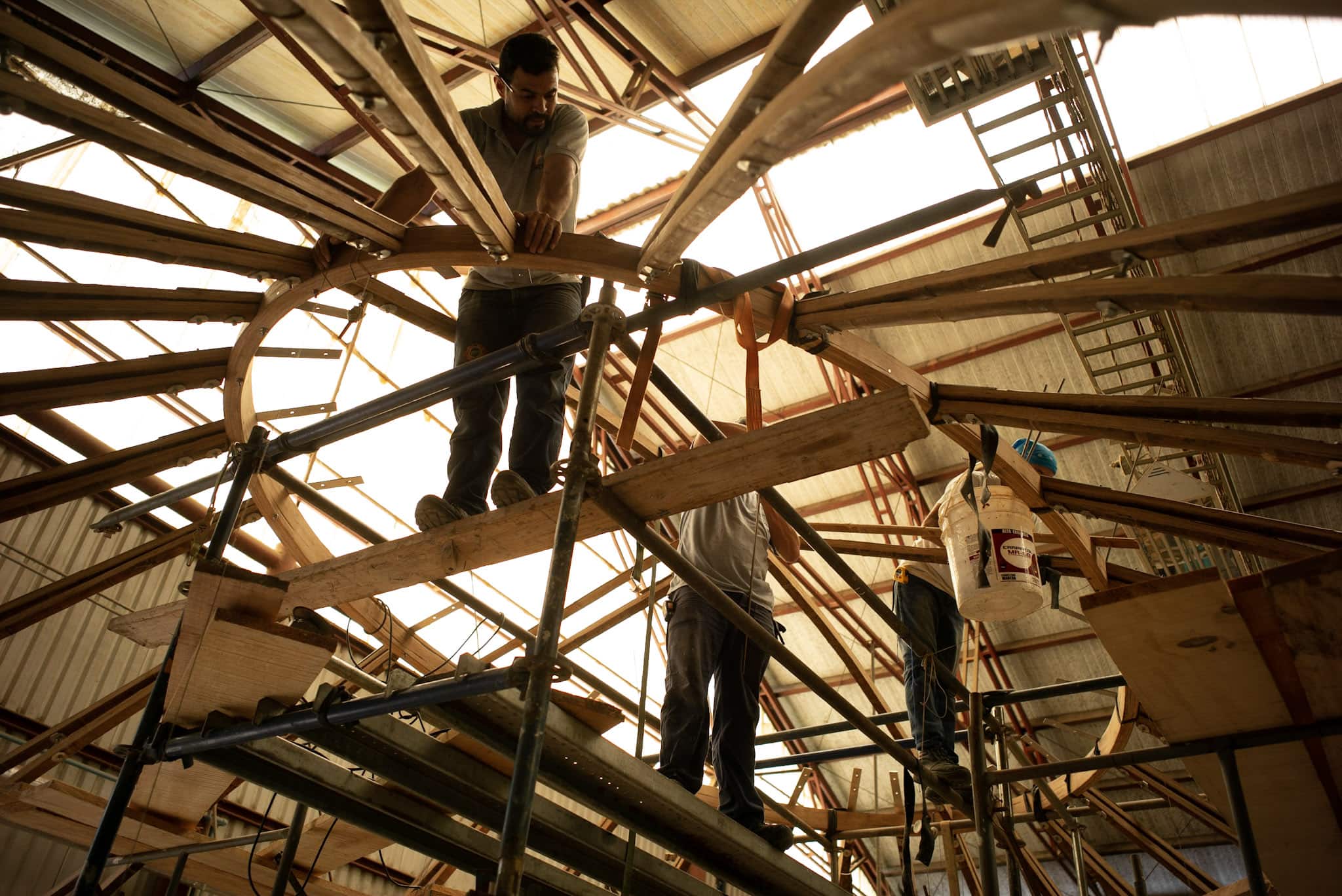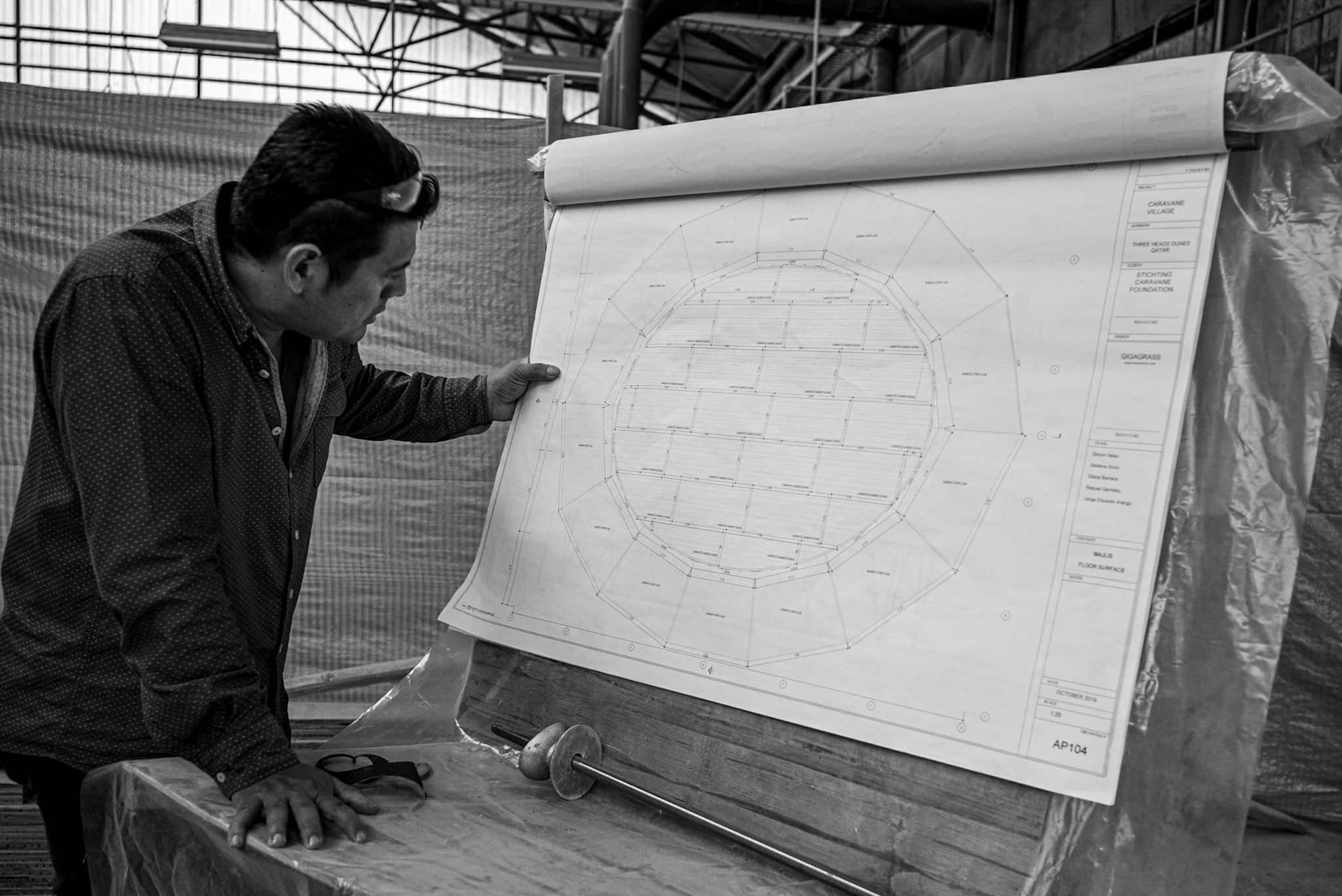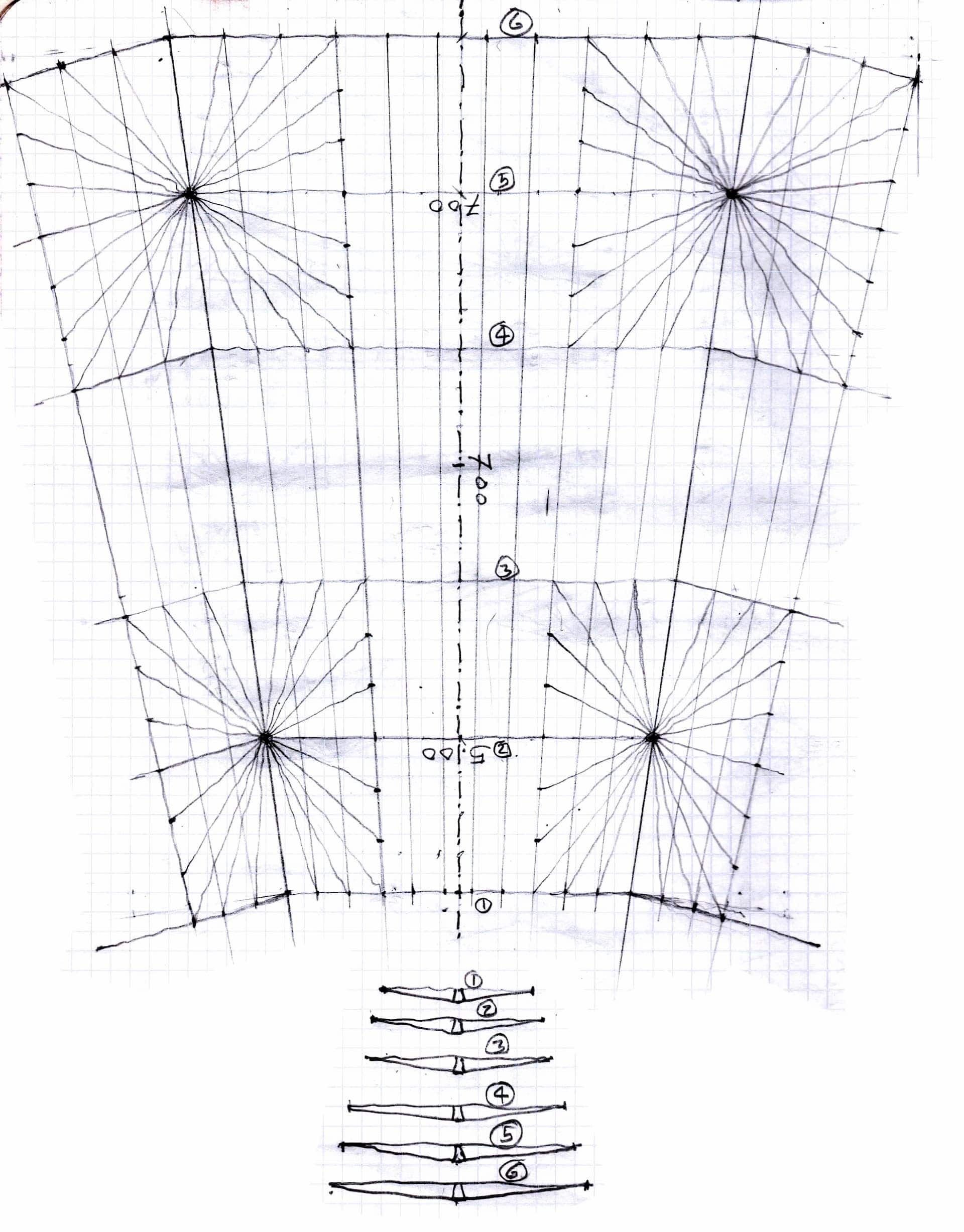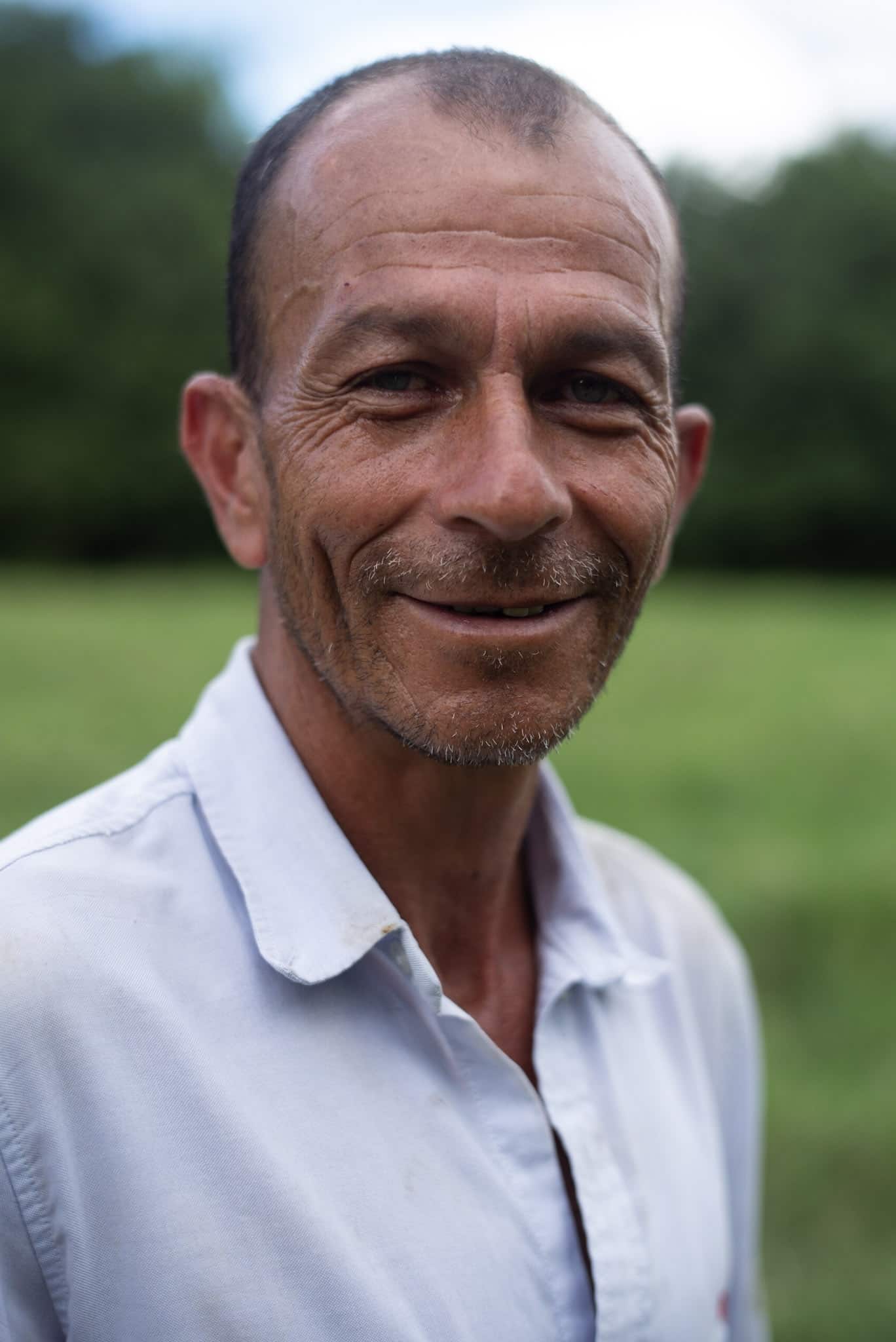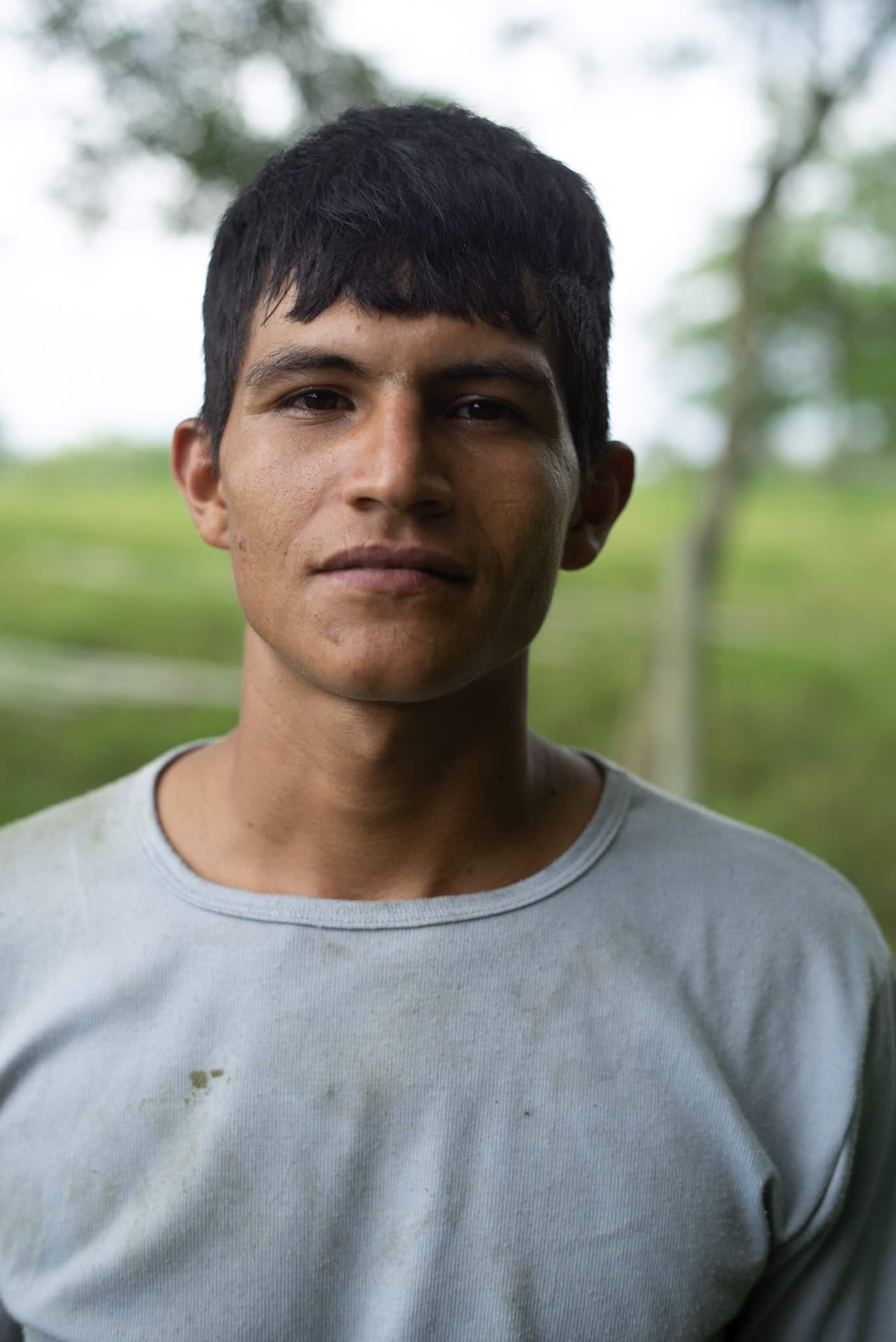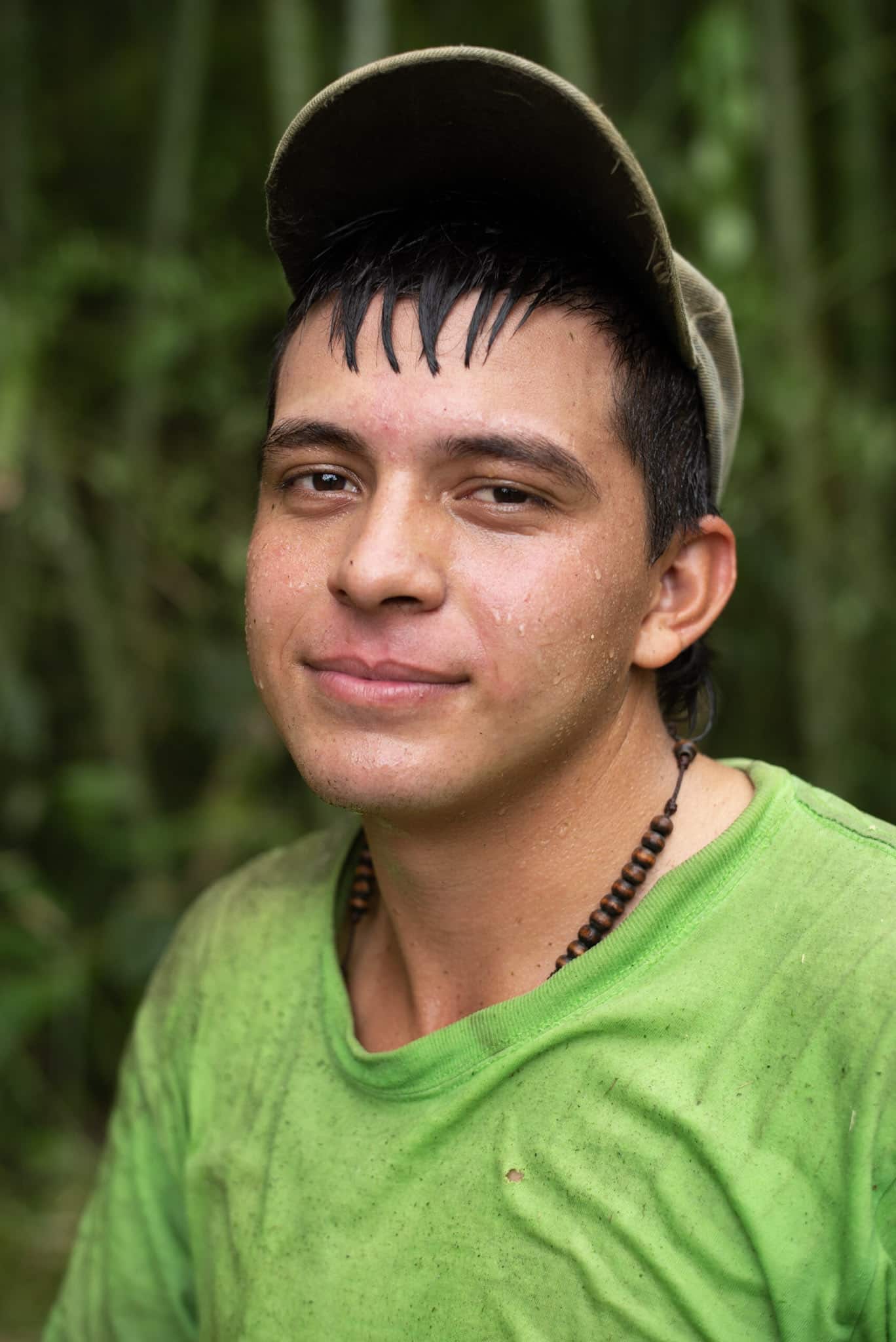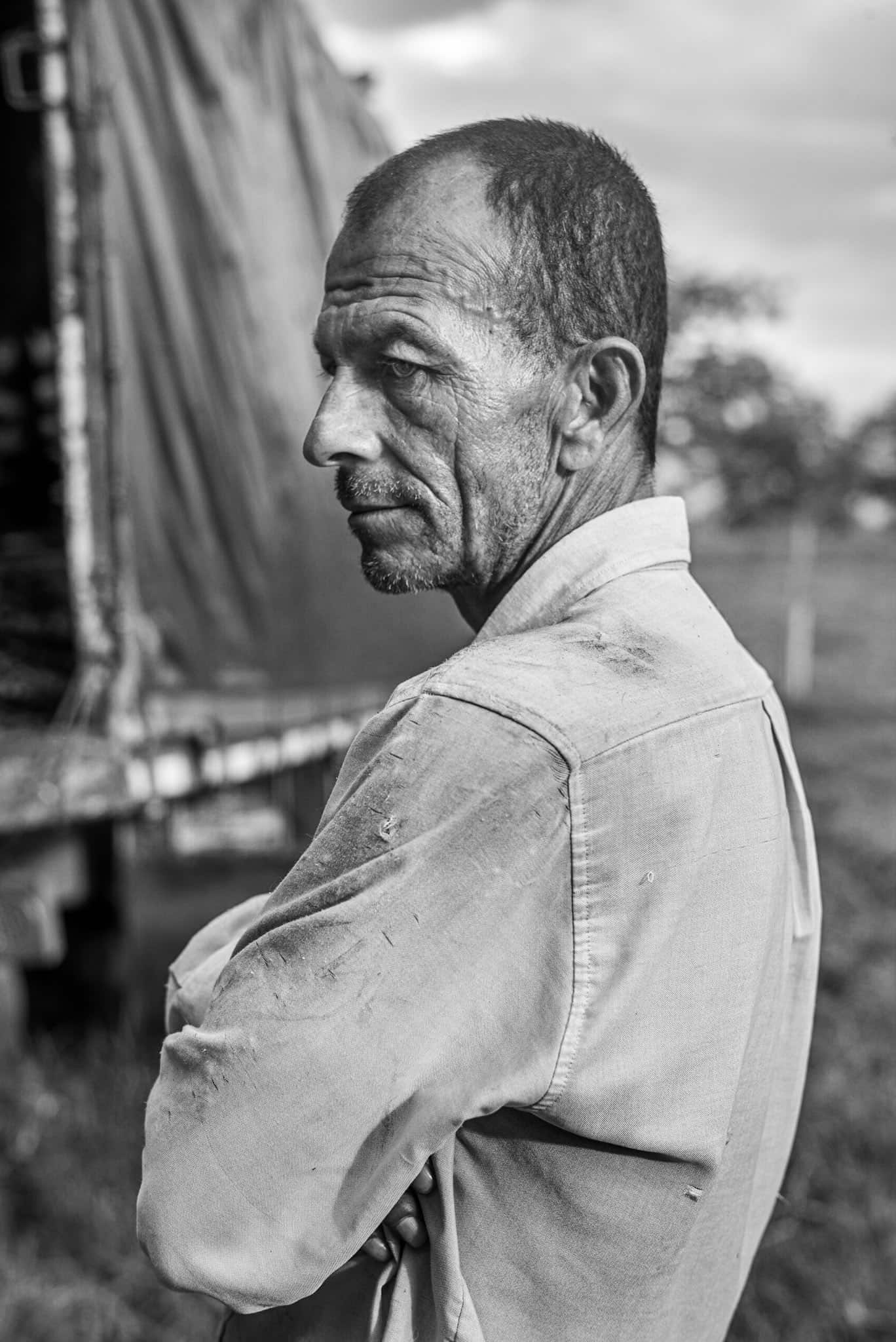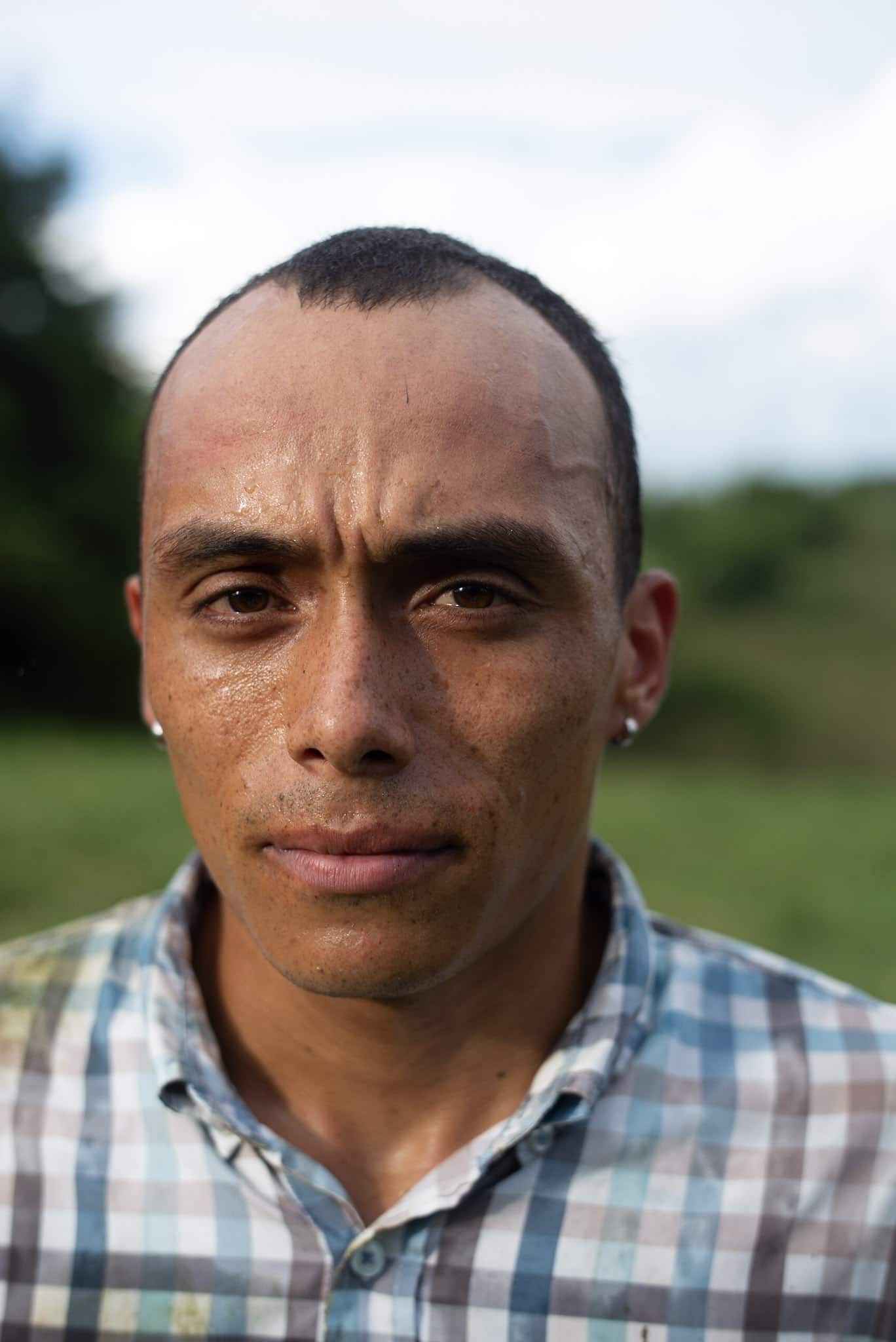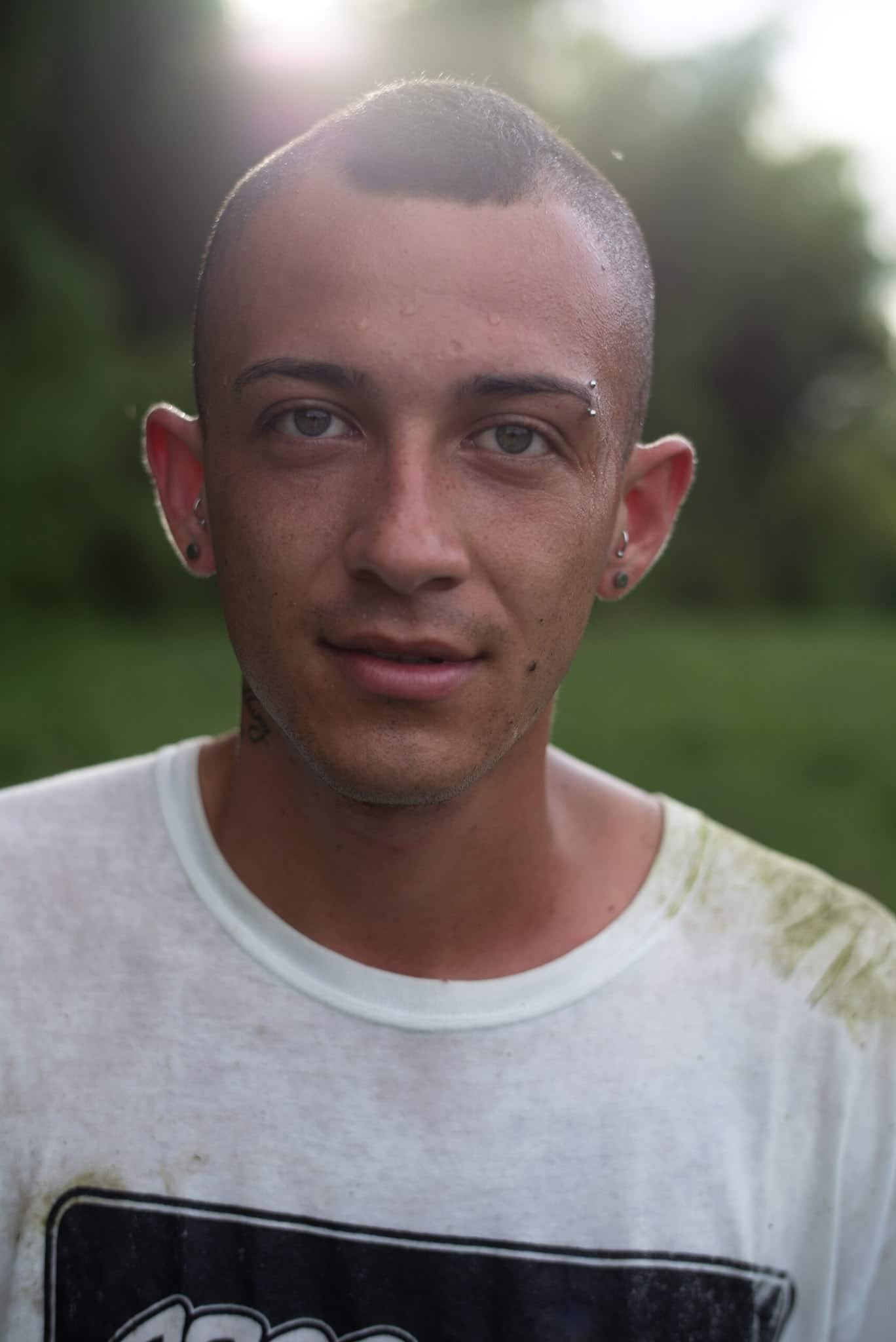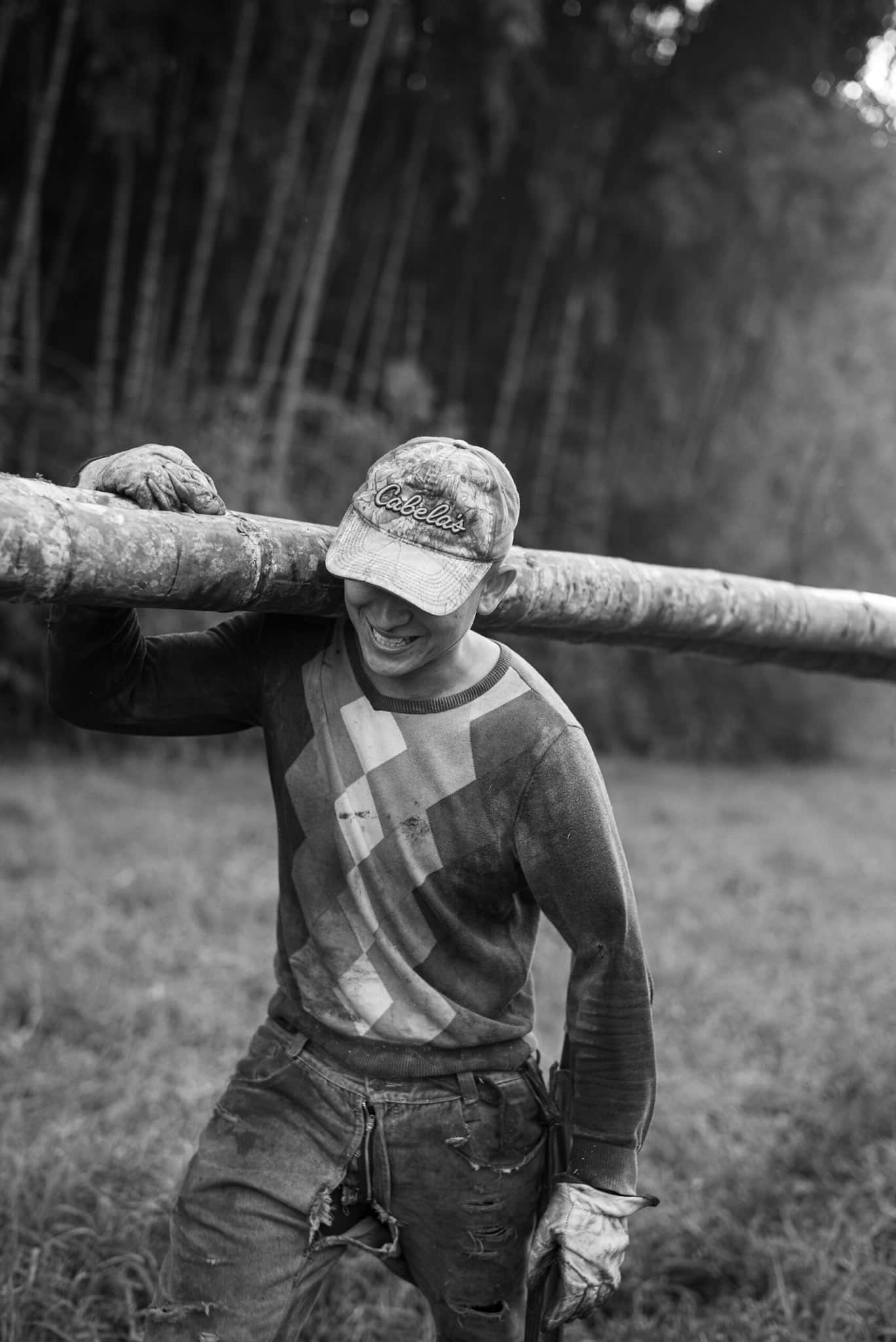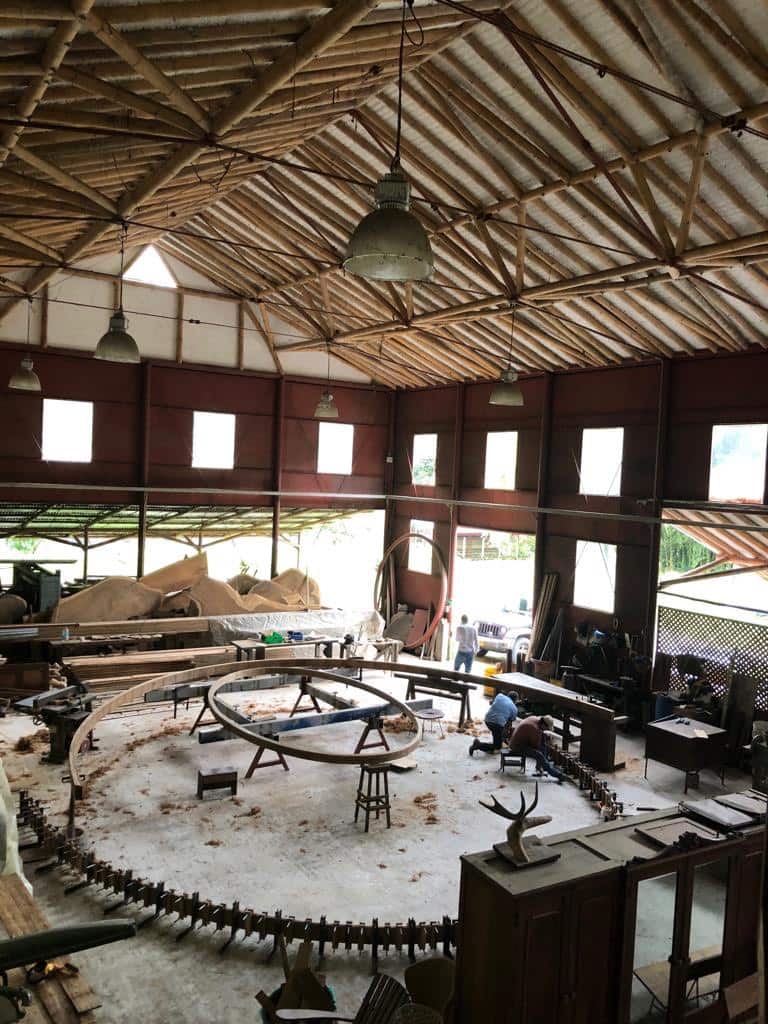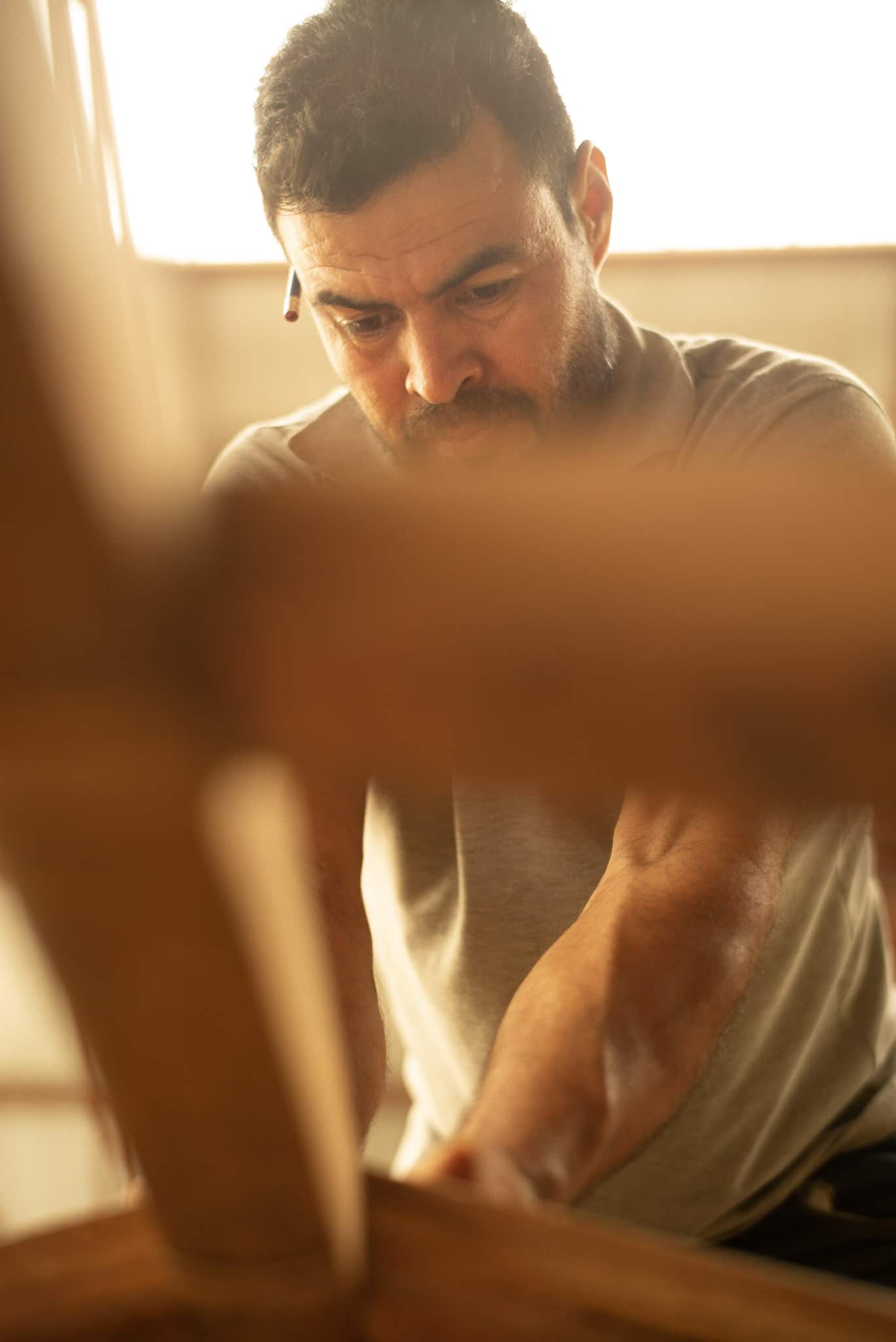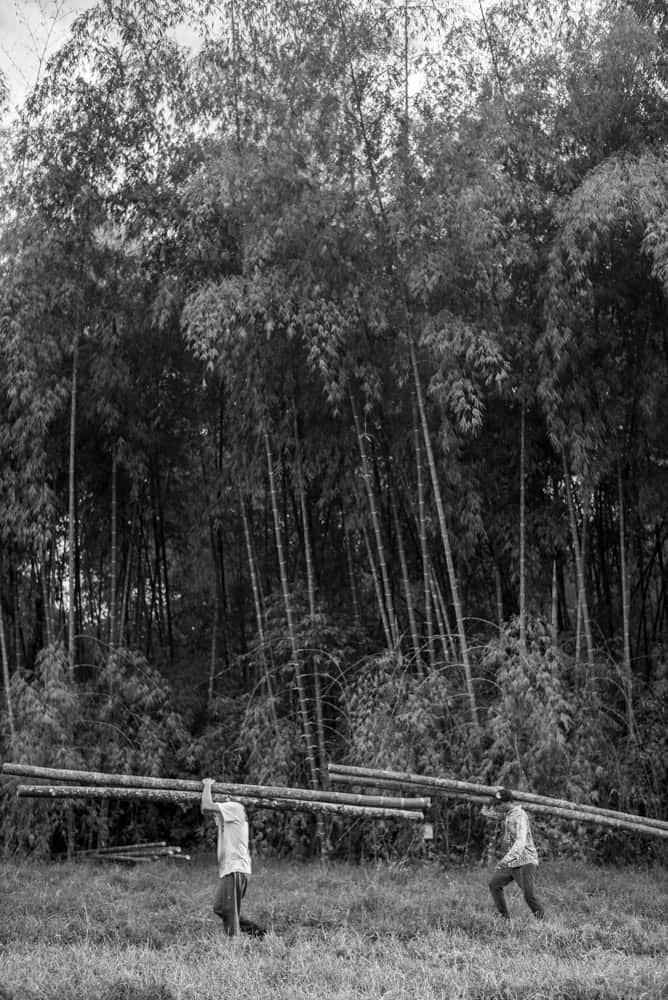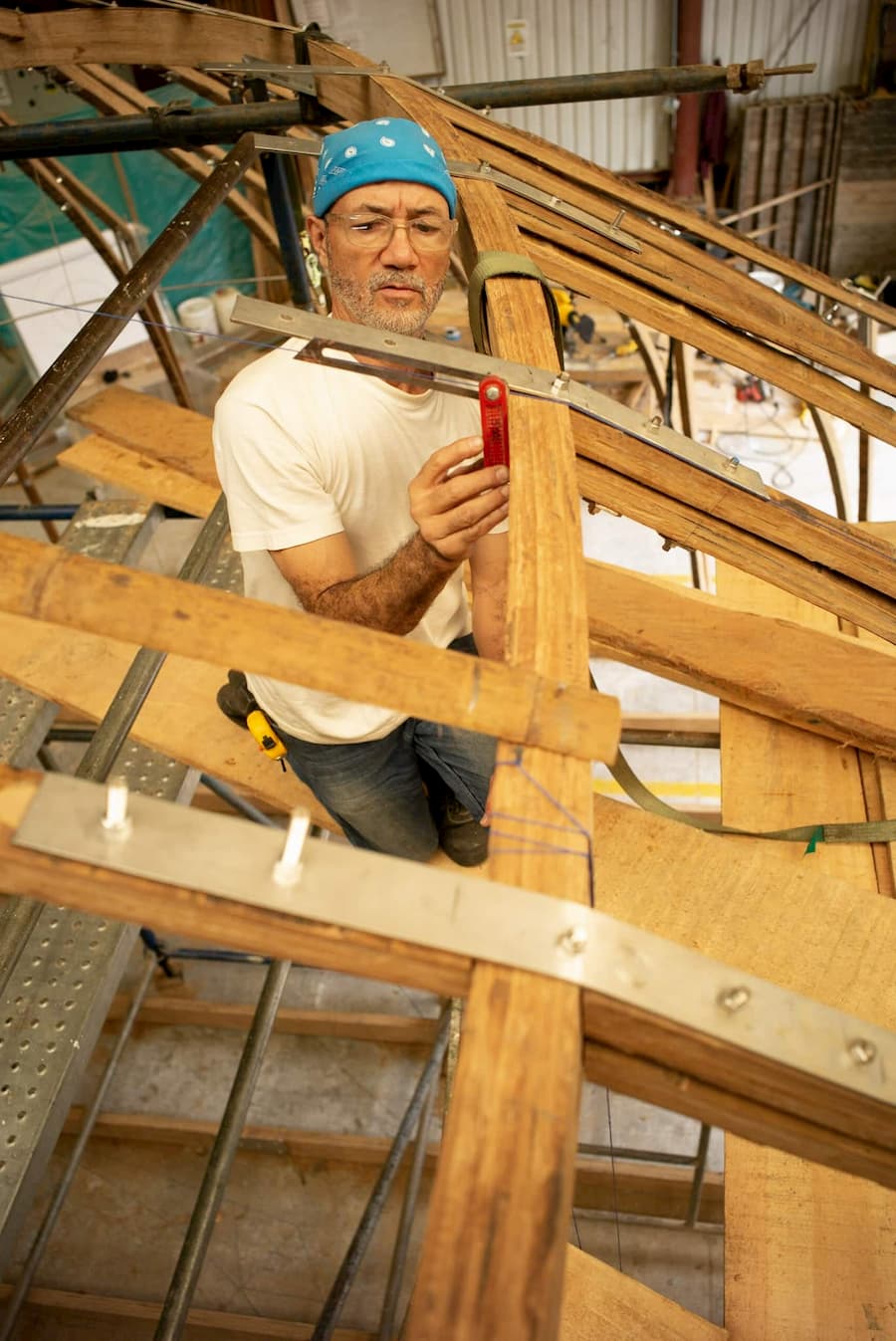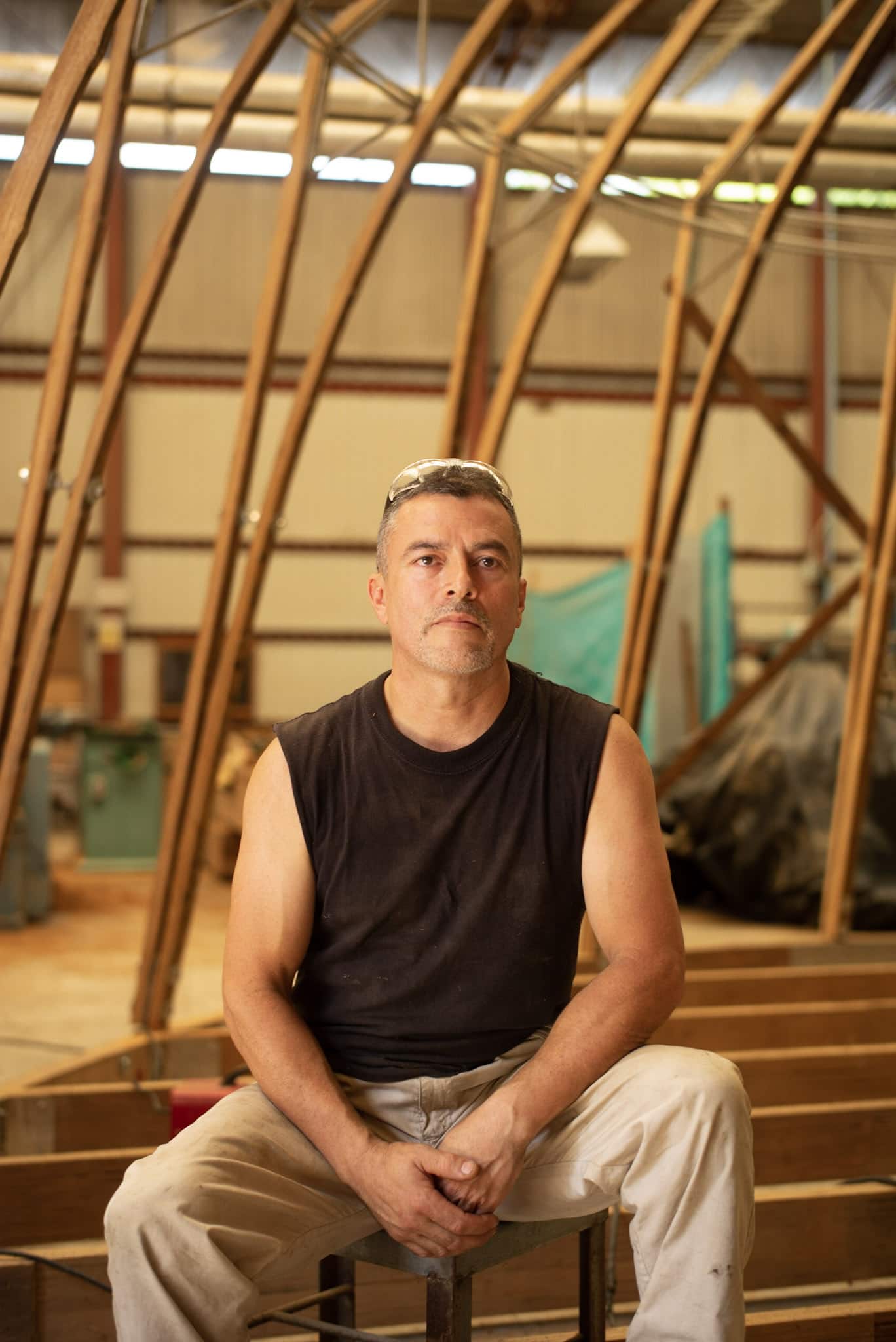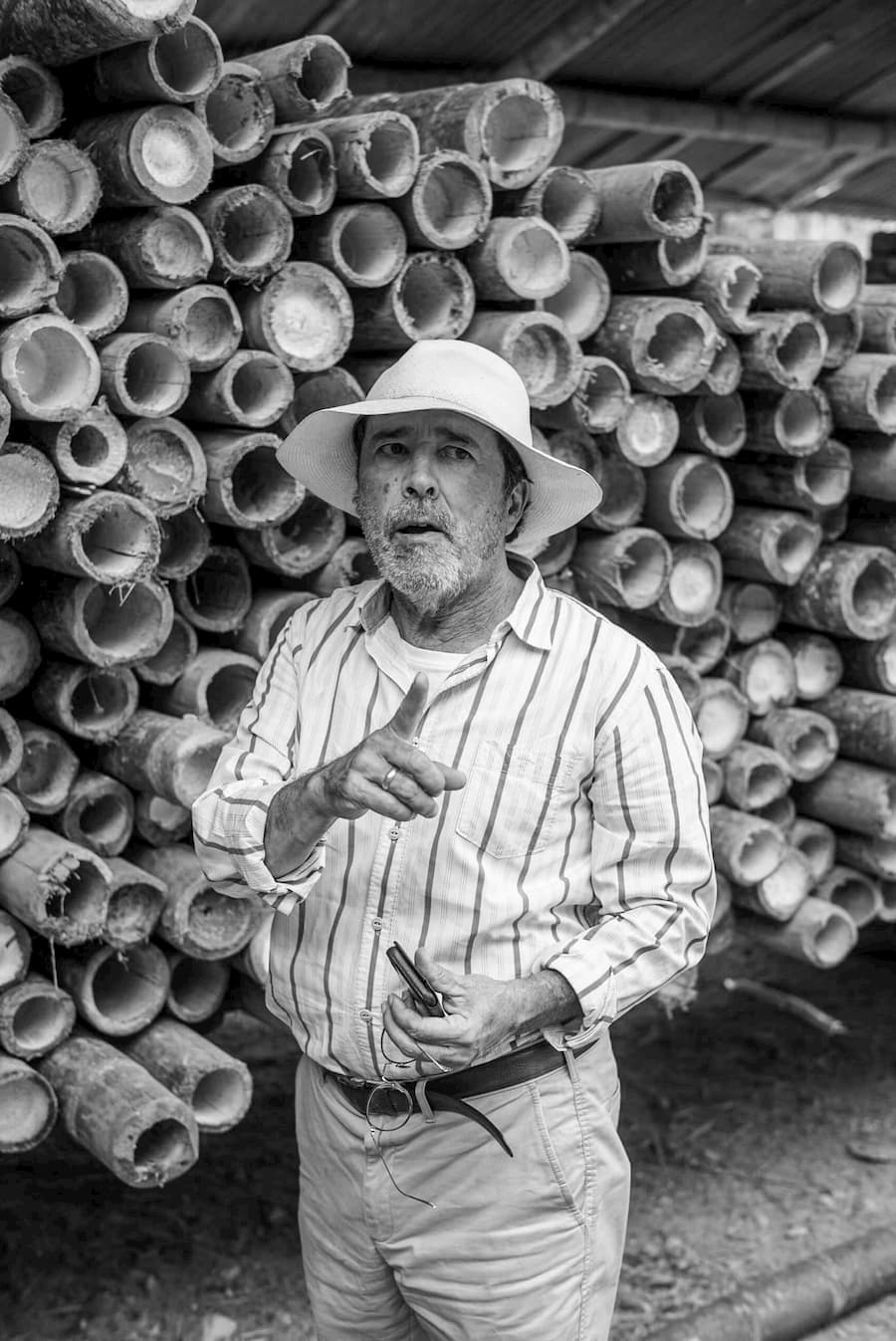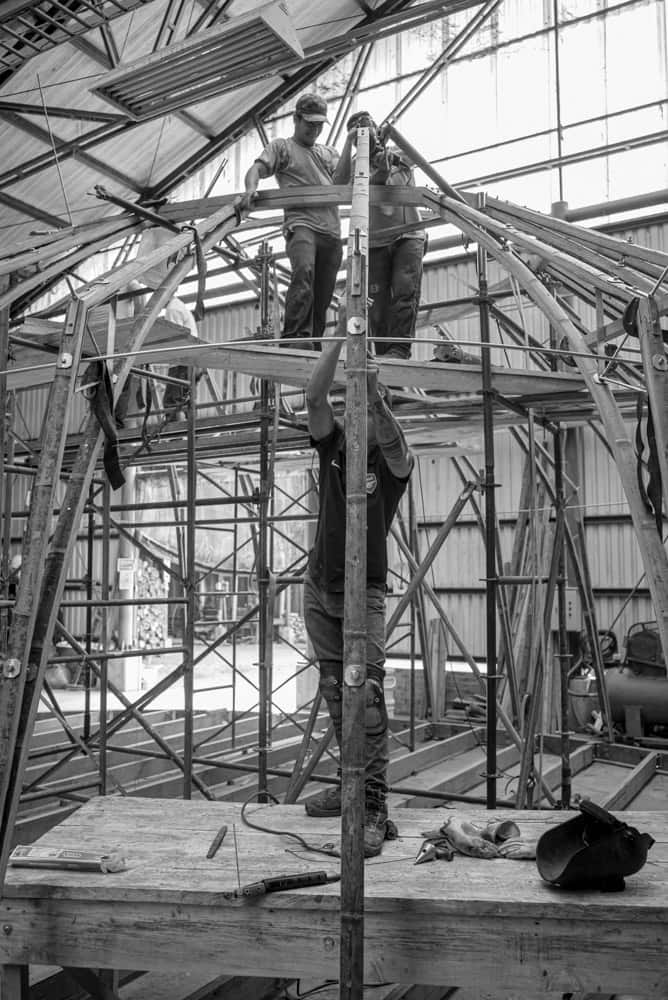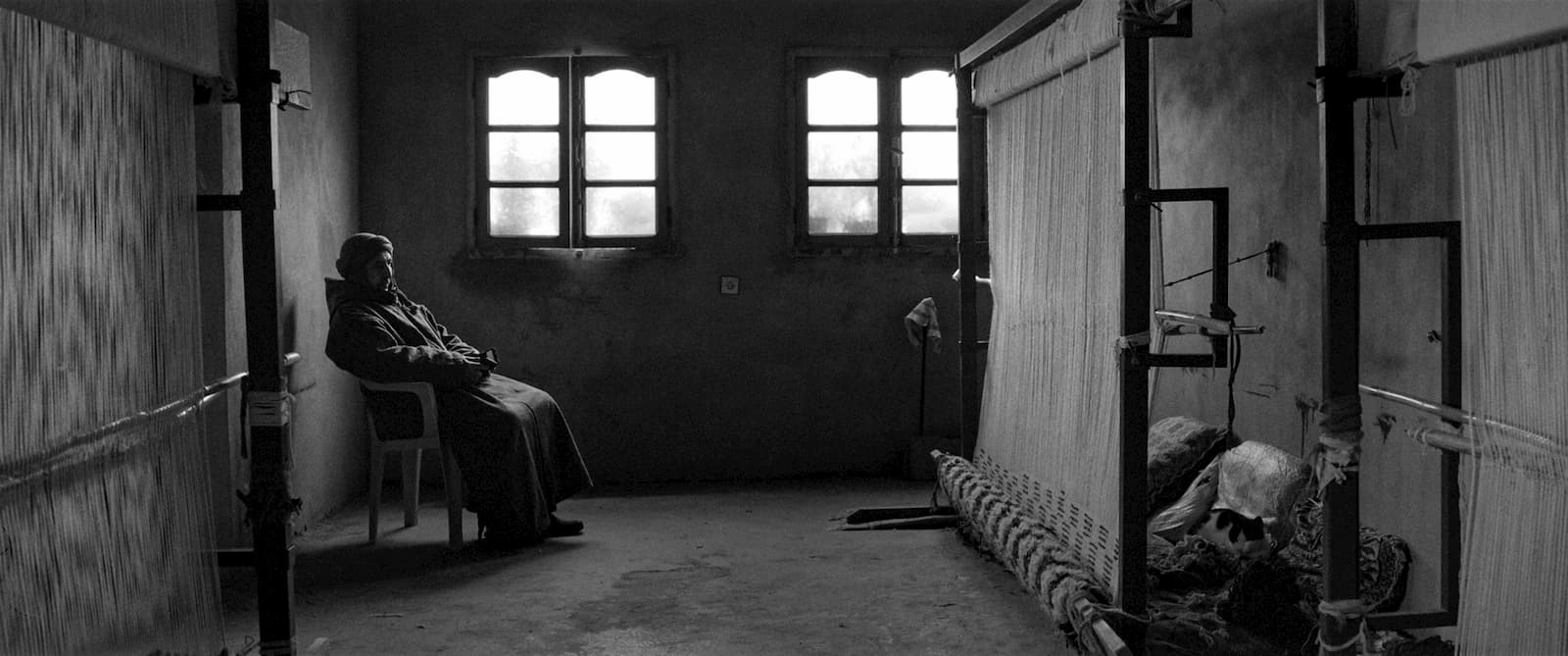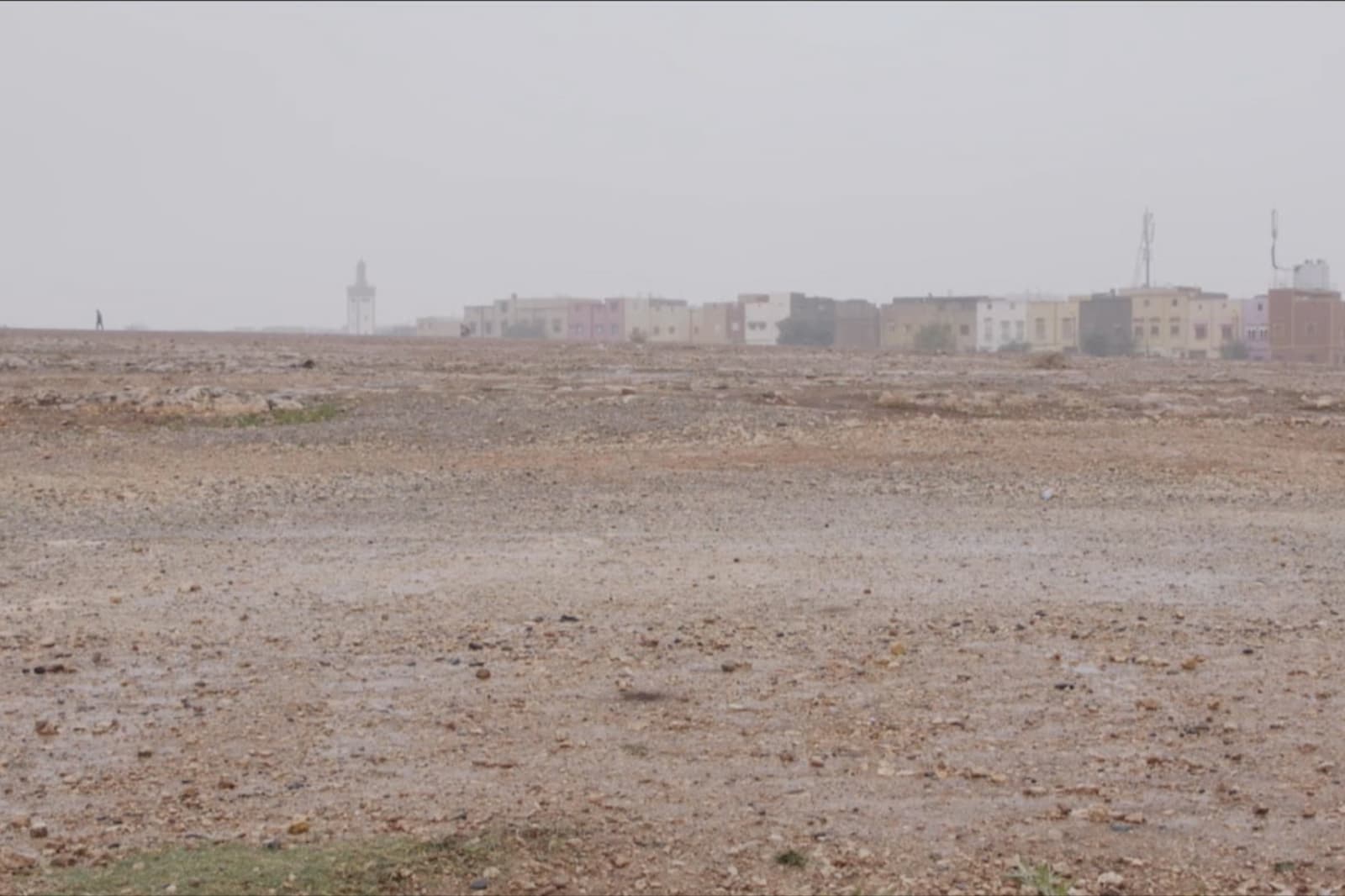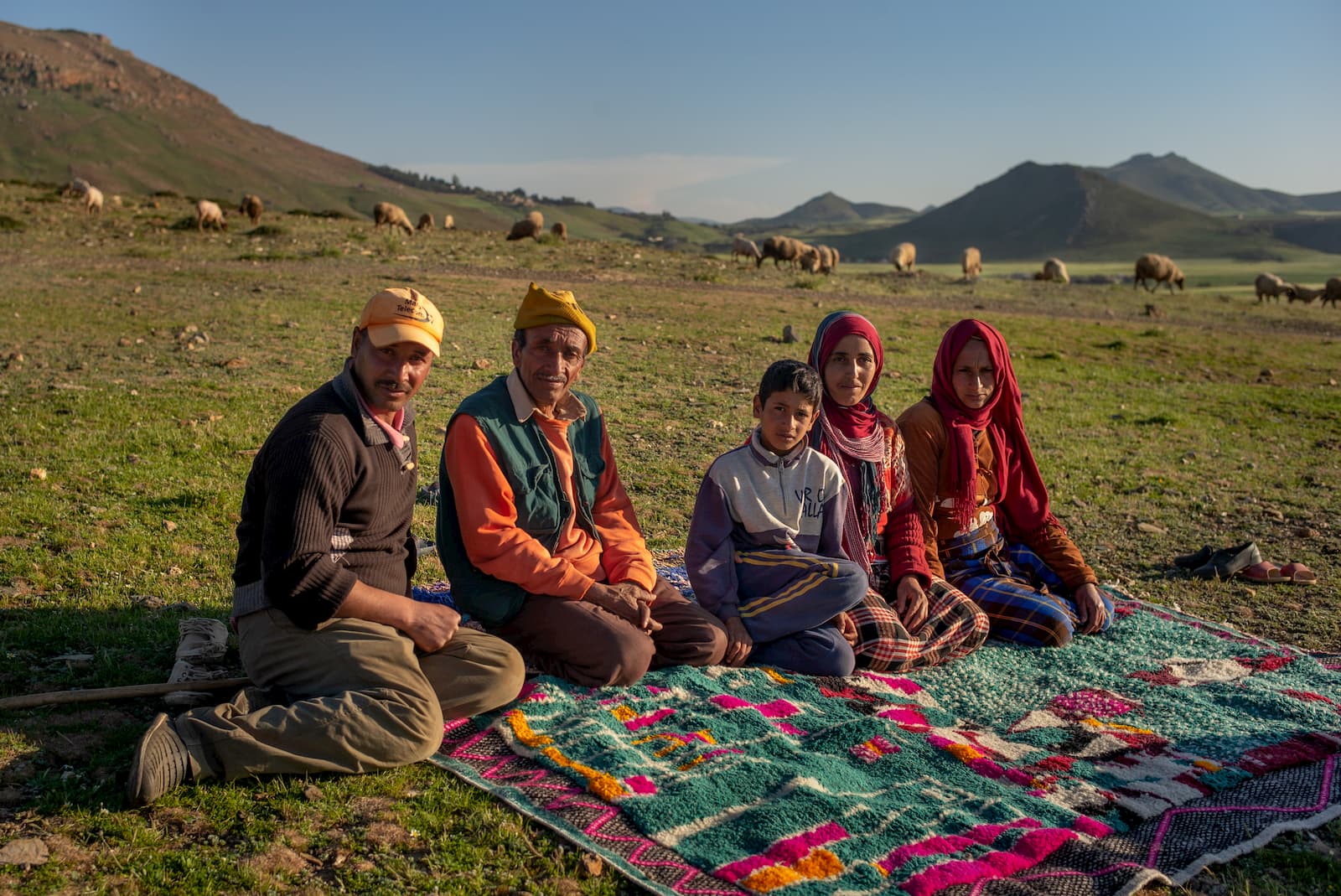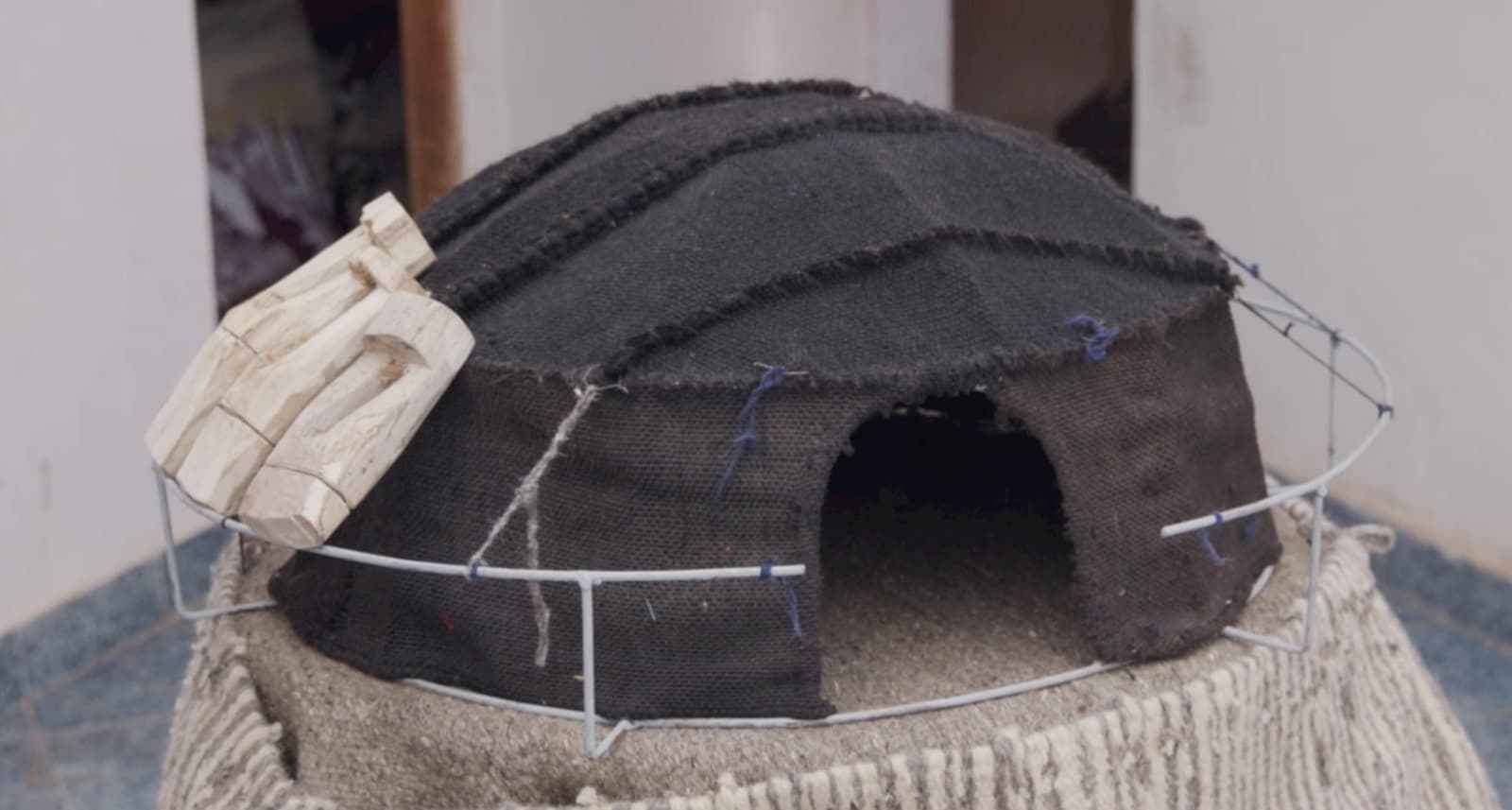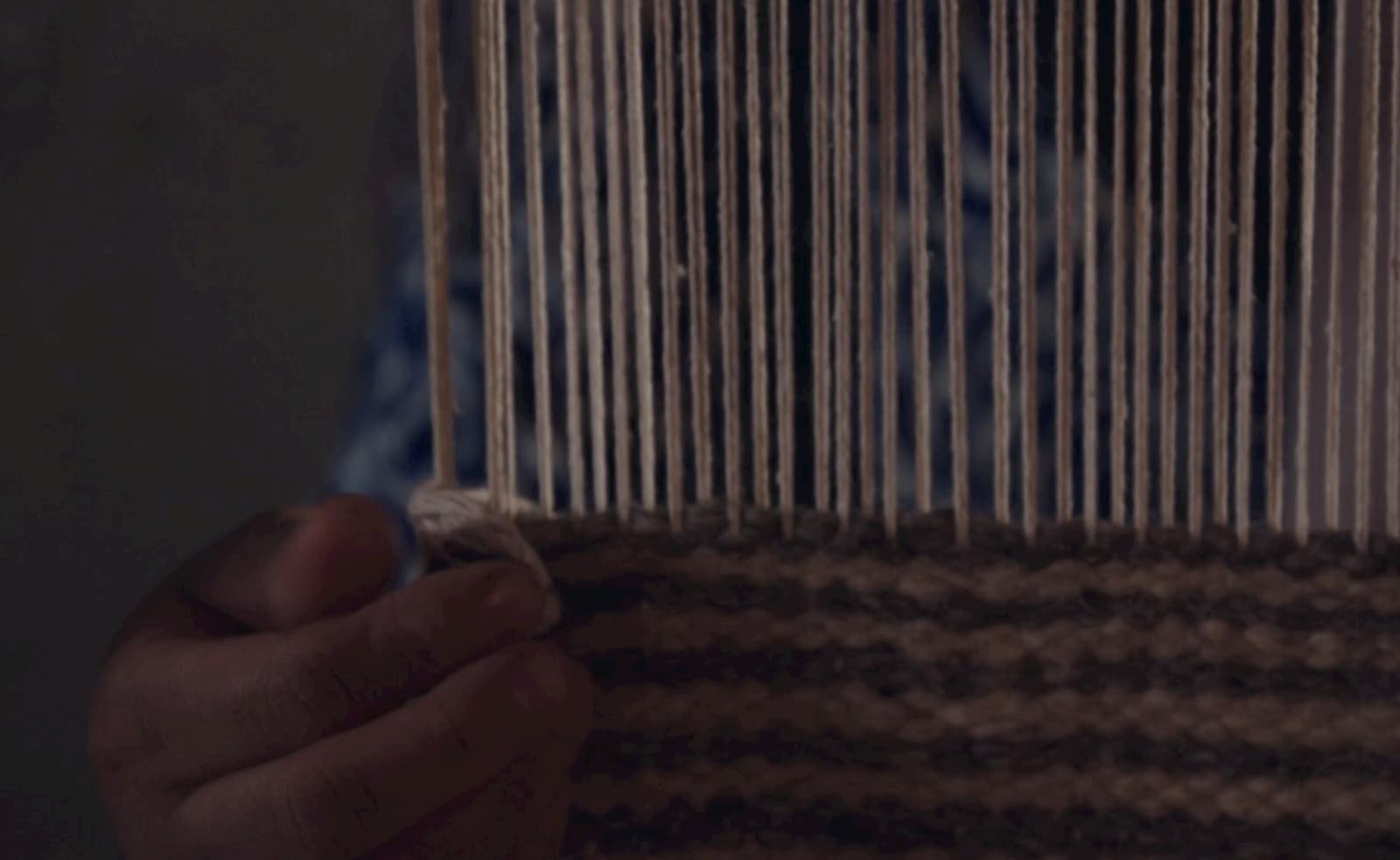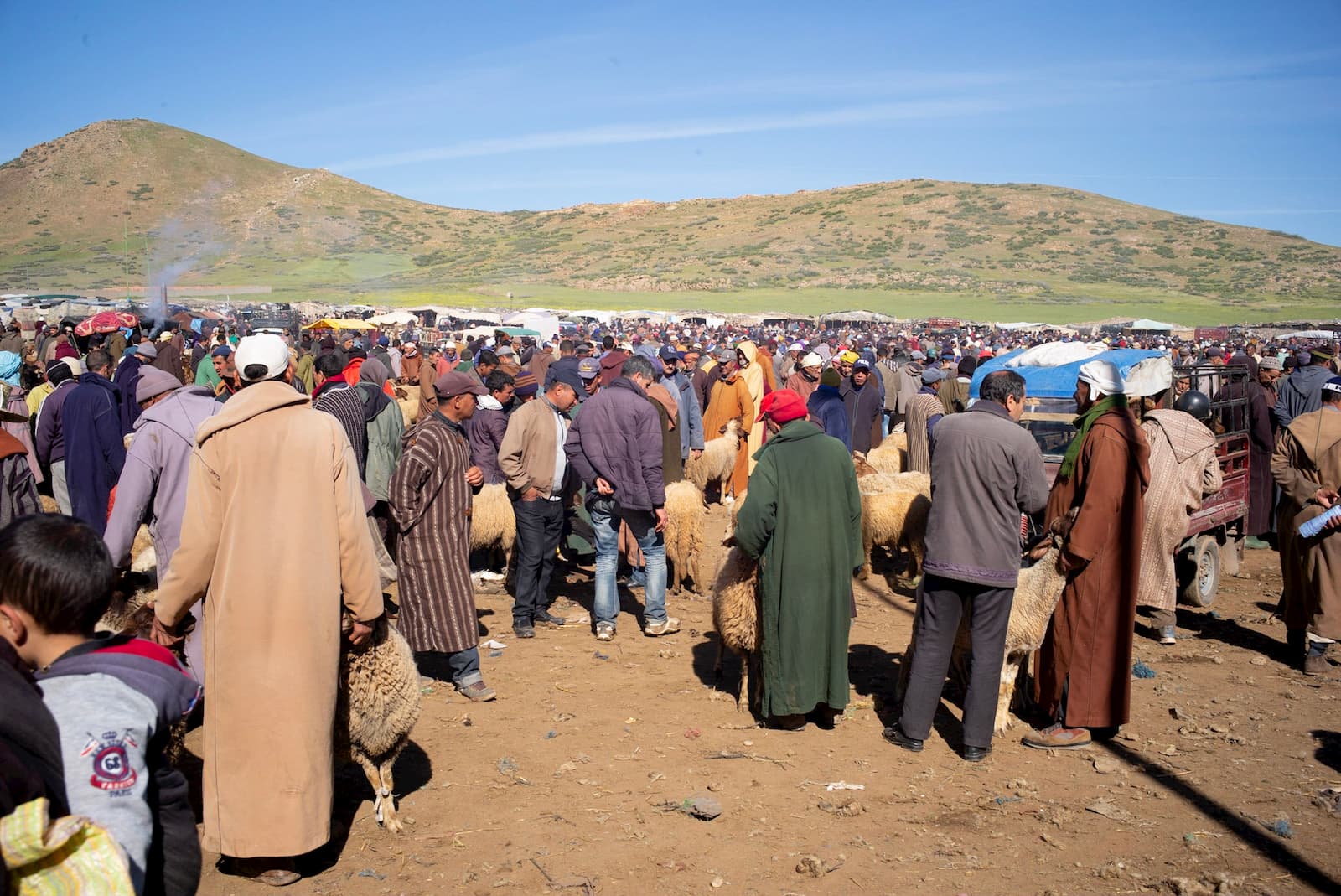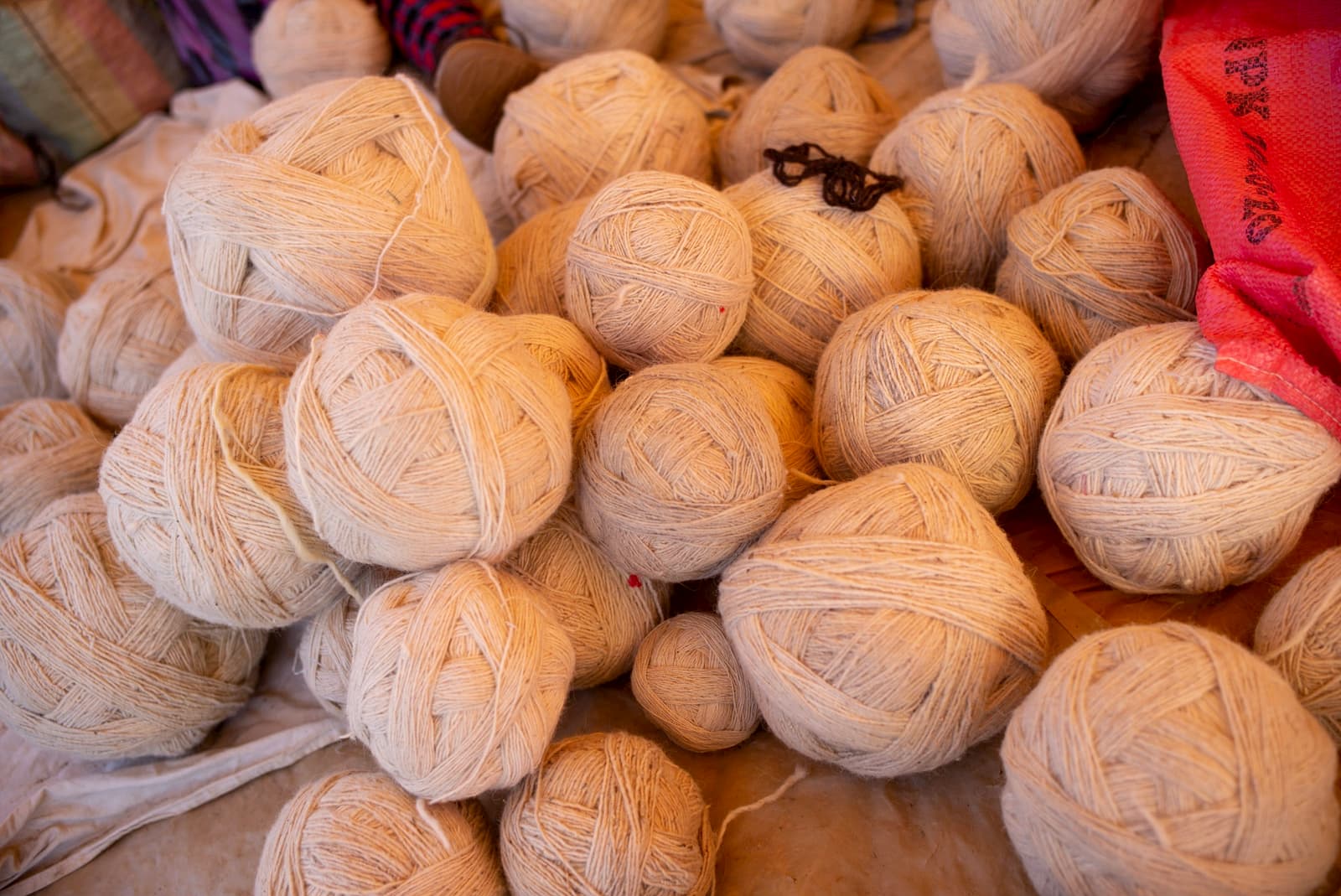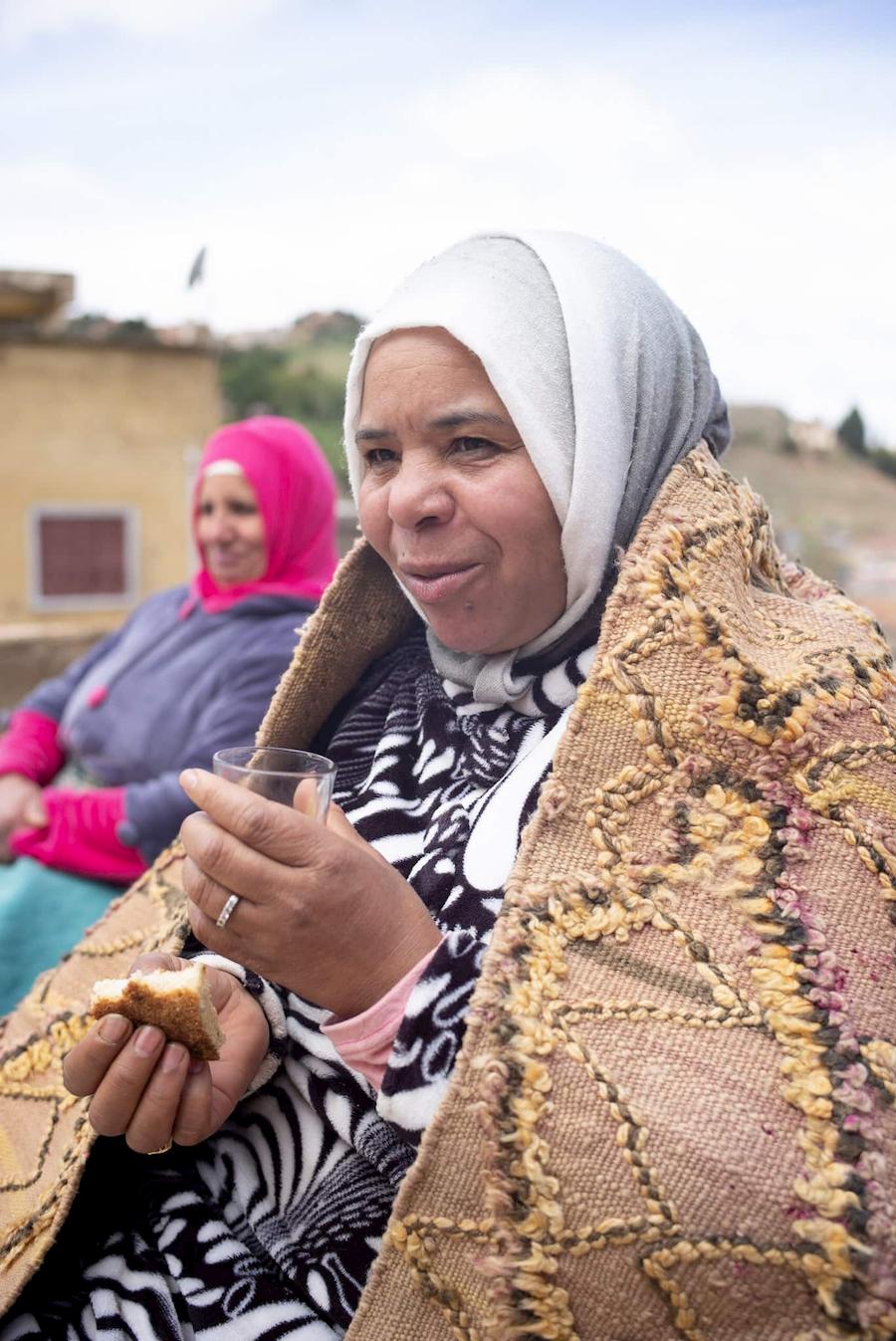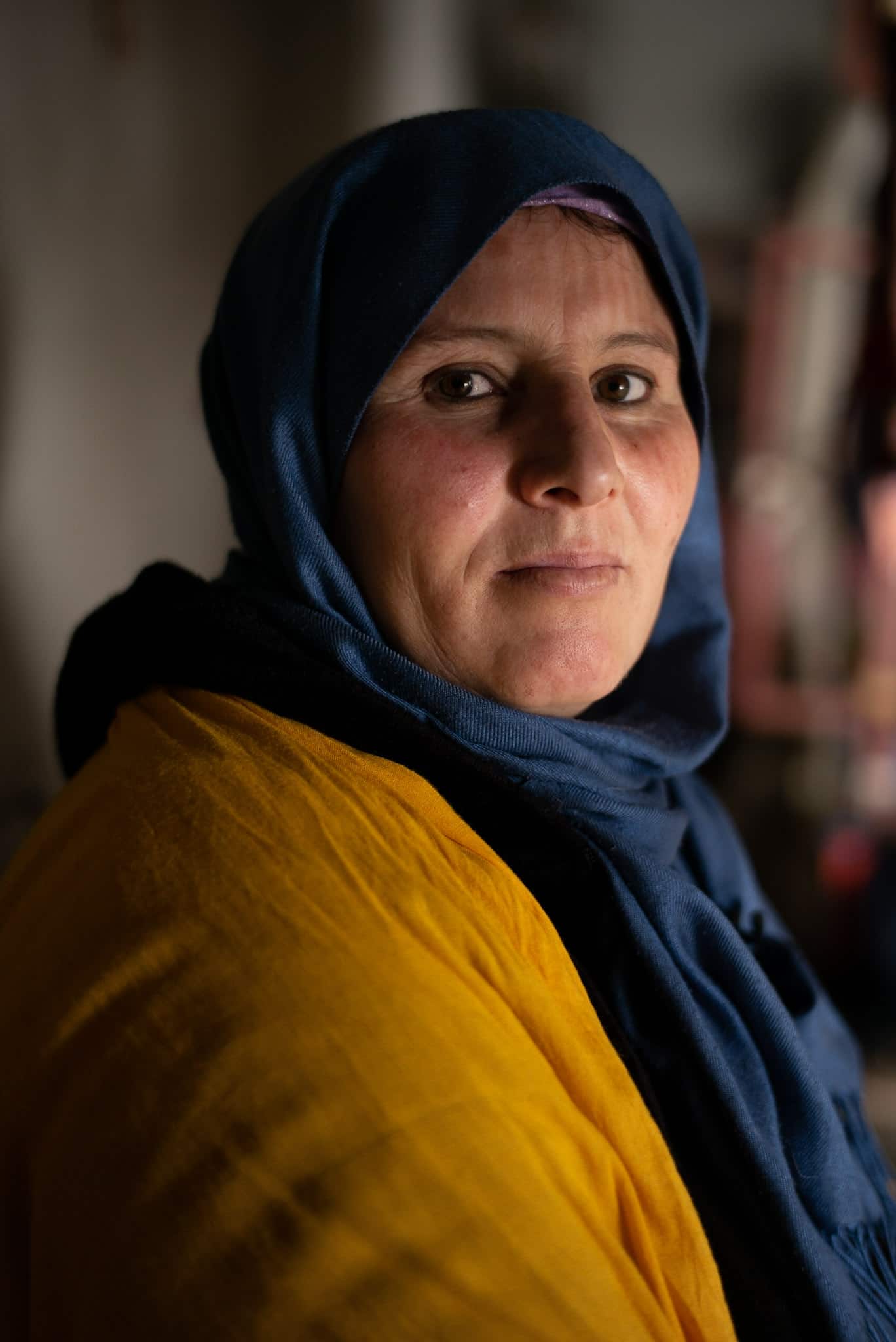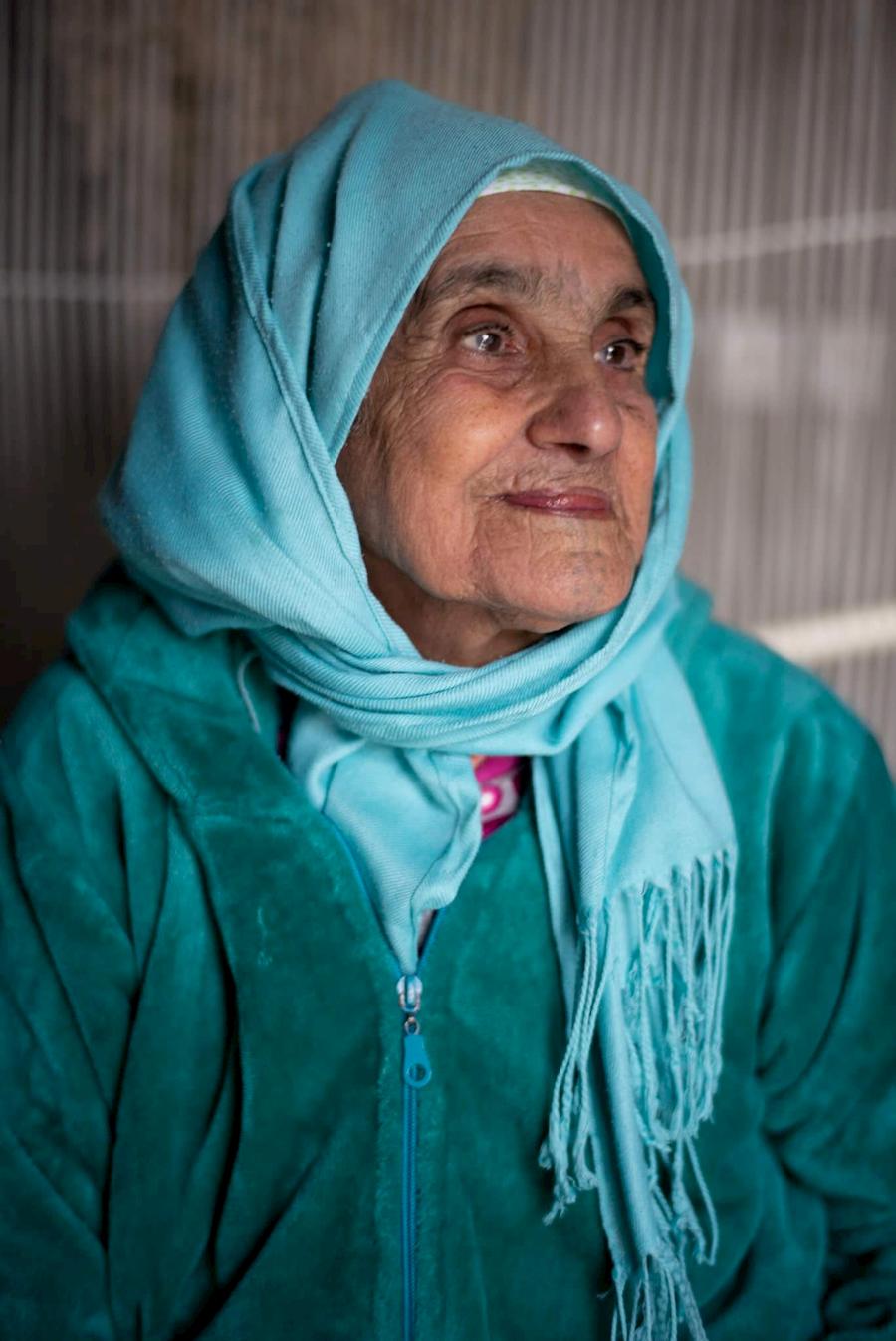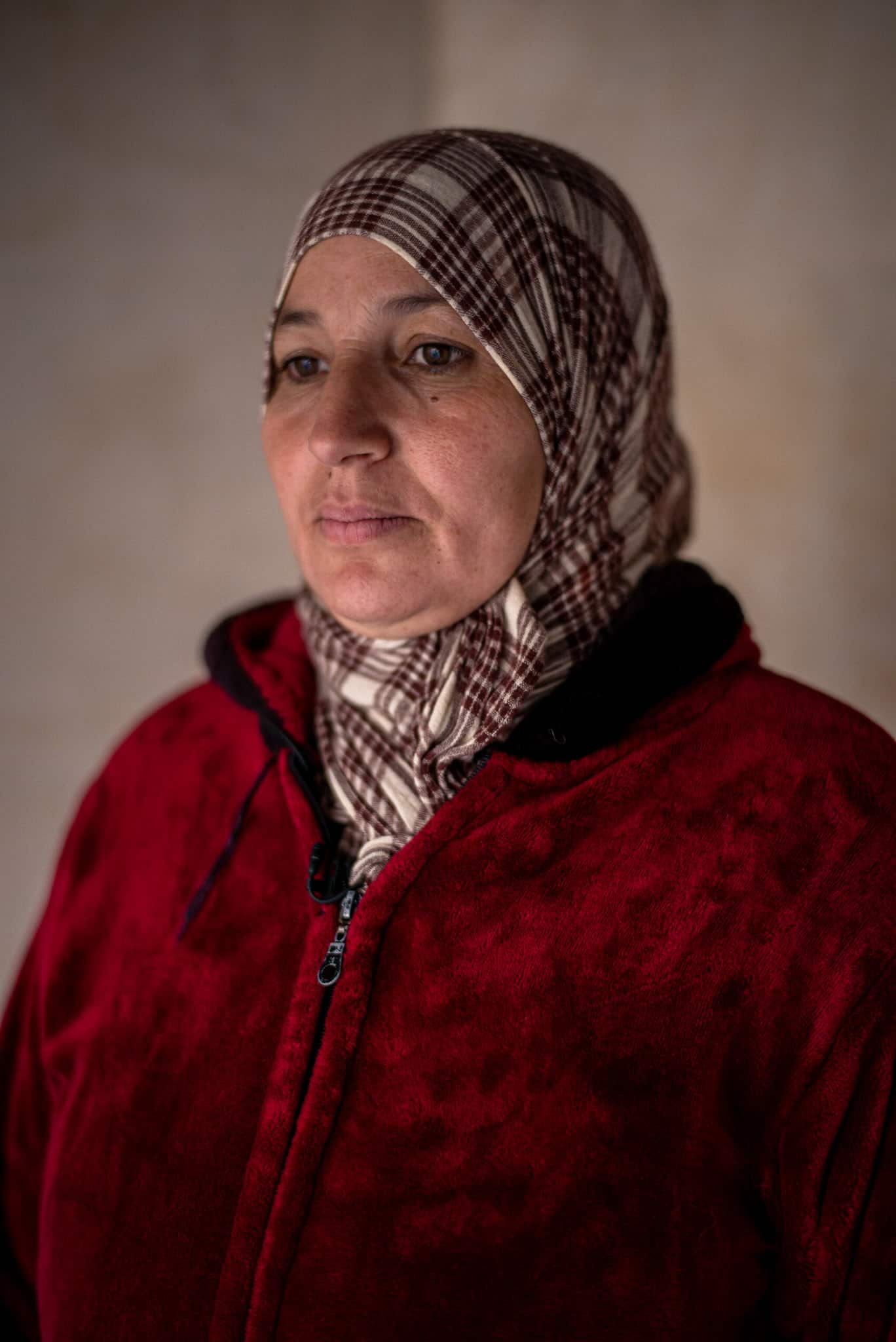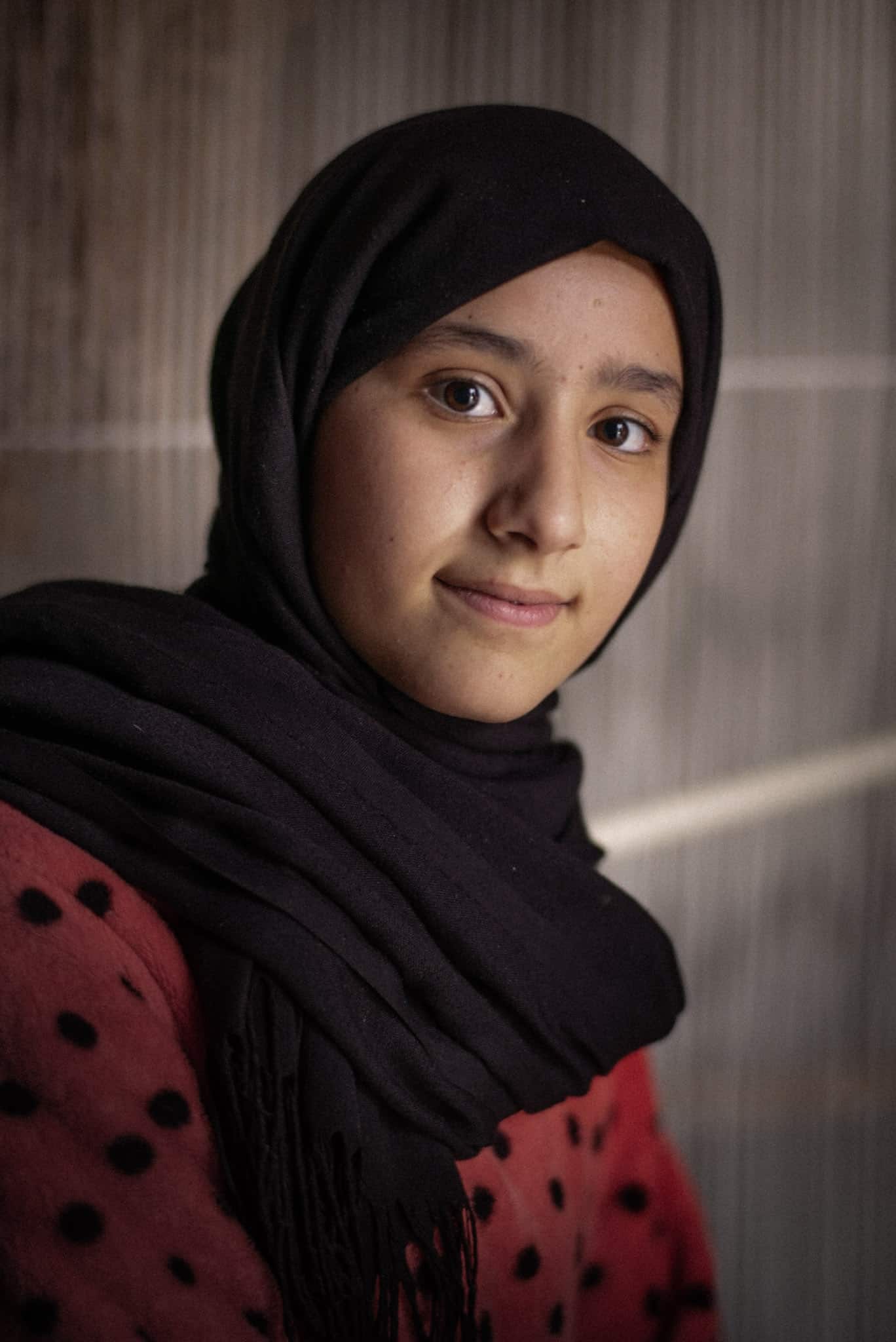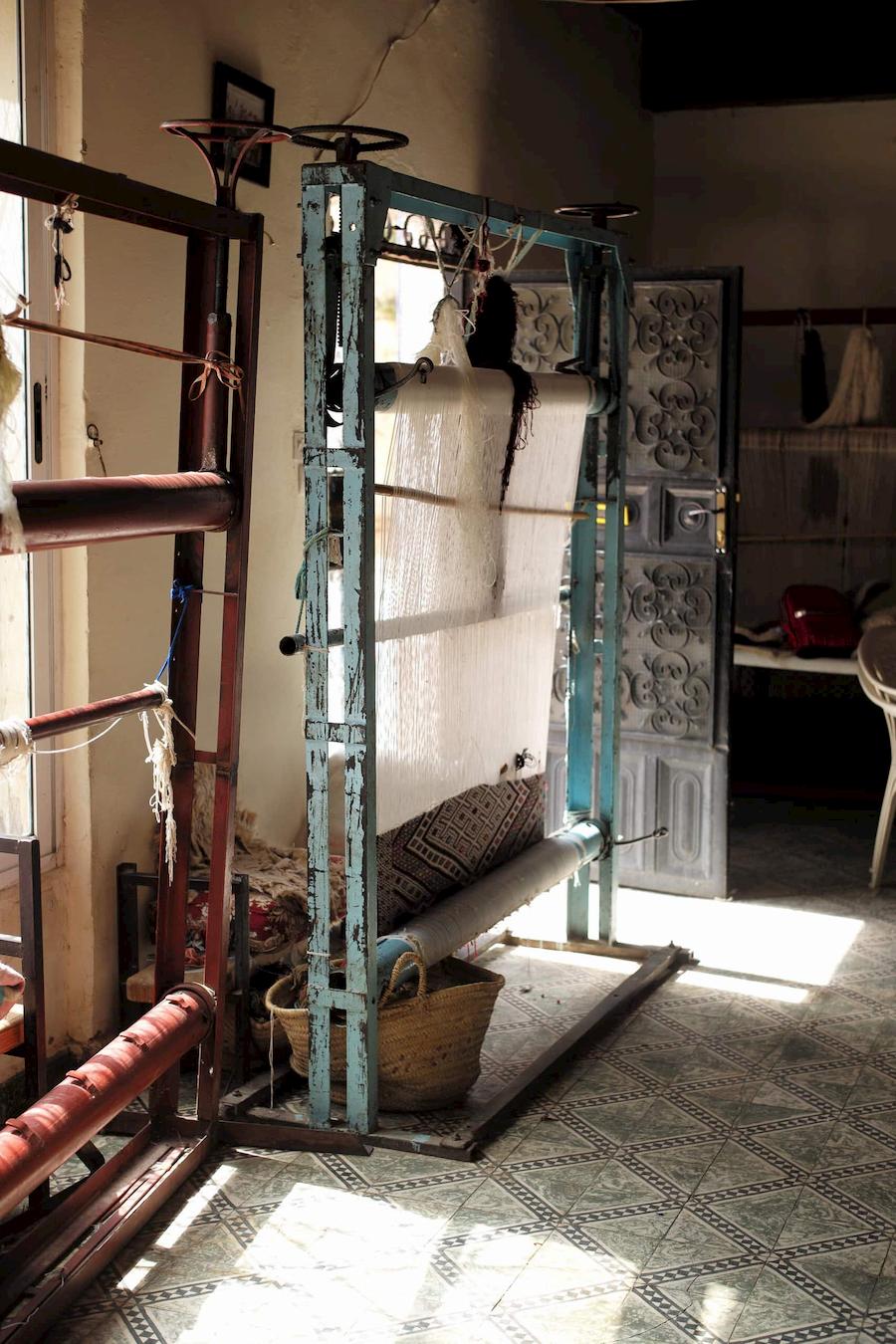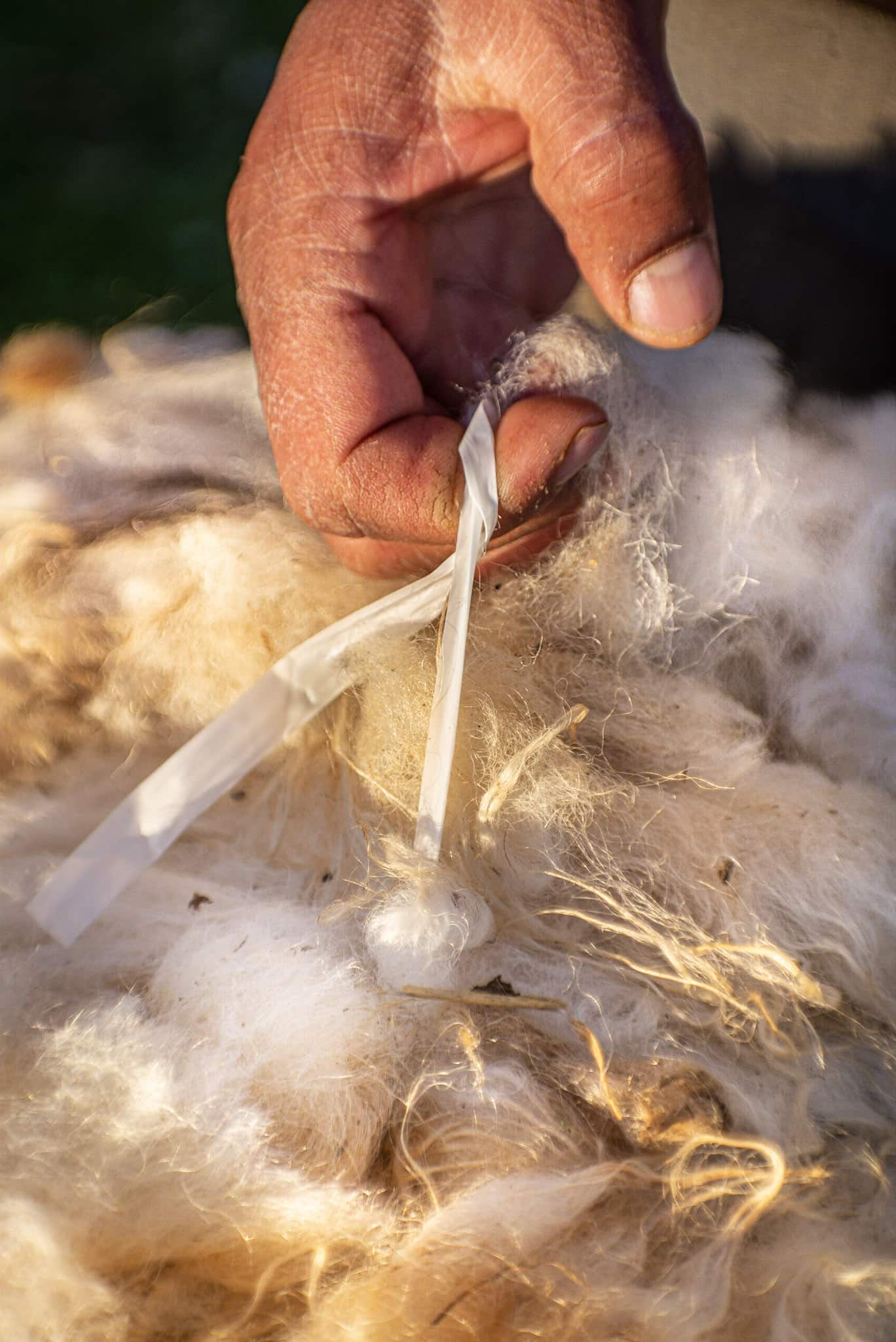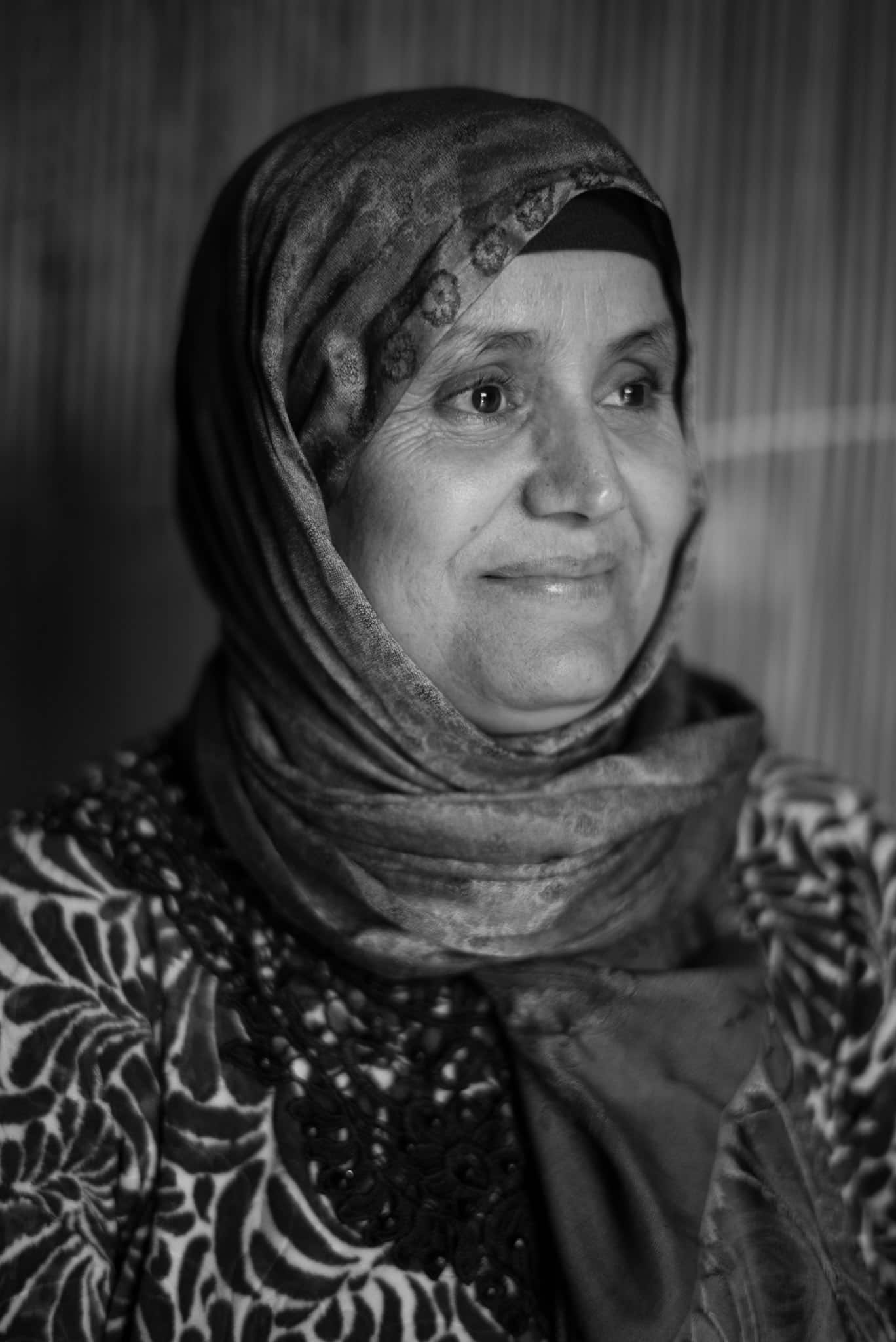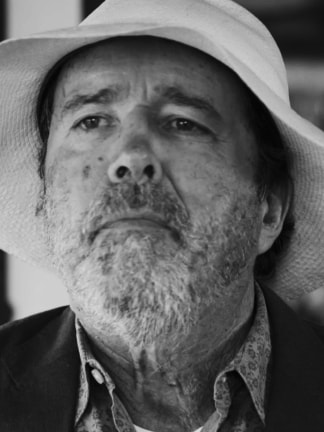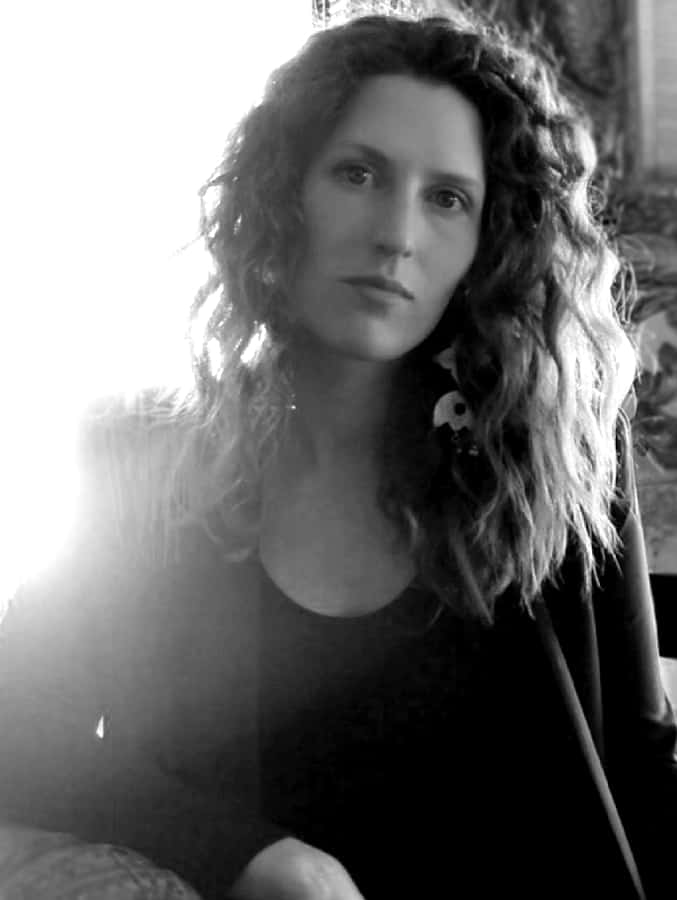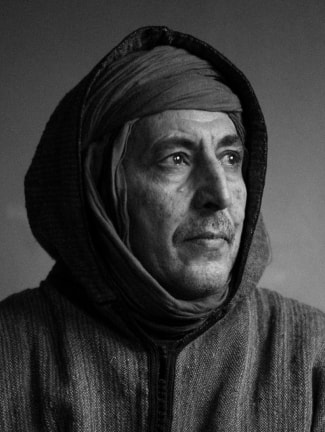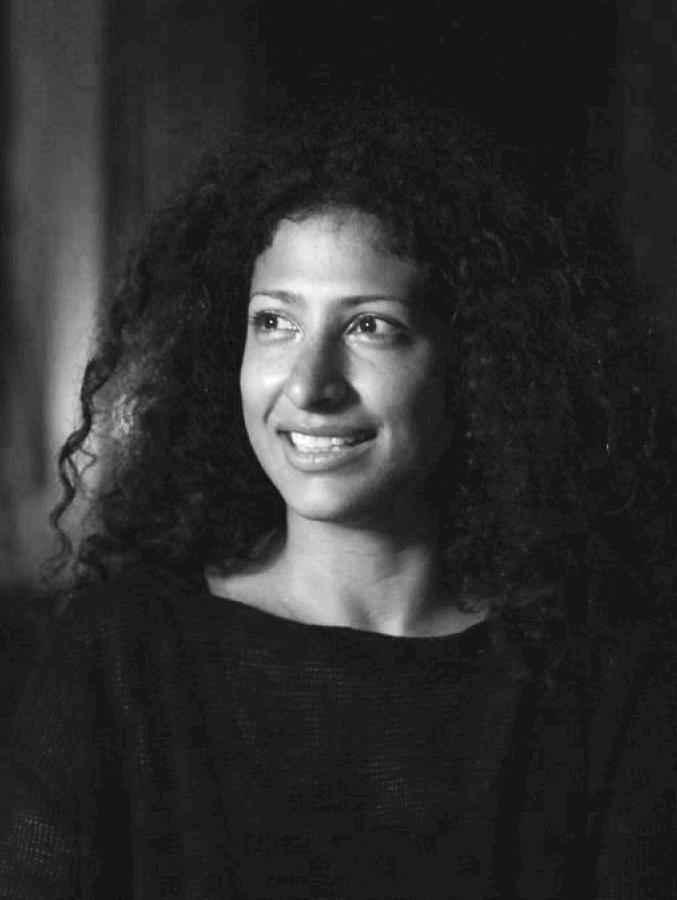Bamboo-Textile
Architecture Initiative
Mobile bamboo-textile structures for an Art Village in the Desert inspired by nomadic building techniques; made in collaboration with Simón Vélez, Stefana Simić and Ahmed Chmiti.
Architecture is among the most tangible expressions of Western design dominance, as concrete, glass and steel have replaced textile, wood, and earth at a societal and environmental cost that is difficult to measure. It is also a palpable sign of indigenous cultures disappearing; cultures whose identity relies on coexistence with Nature. Urban development practices of today risk alienating individuals from culture and nature, ultimately undermining solidarity among peoples.
“Bamboo is not for the rich or for the poor. Bamboo is a material for humans.”
Our Bamboo-Textile initiative aims at sustaining vital nomadic craft practices through combining the efforts of architects, artisans, engineers and harvesters. We produce designs which can mitigate socio-economic, cultural and environmental challenges of today.
We use craft techniques that were refined over generations to make sophisticated, durable, portable contemporary buildings using textiles and bamboo, two of the most renewable resources on Earth.
In collaboration with Gigagrass and Chmitti Weaving Cooperative we designed 8 buildings for the Art Village launch in 2022. Each building can be assembled and disassembled by-hand. They are travel-friendly and provide space for craft, theatre, vocation and learning, sleeping, cooking, and eating and activities for children.
The Majlis by Caravane is the first architectural realization of the initiative, and has been chosen for the 2021 Venice Architecture Biennale.


The criteria we set for our architecture designs are quite challenging. The structures should be 100% handmade using building materials sourced gently from nature; heavy machinery is not to be used for construction; traditional techniques are to be combined with an innovative approach; and the buildings have to be mobile. With these requirements, we aim to design and construct poetic vernacular architecture as a living example of goodness and truth leading naturally to beauty.
The Biennale di Venezia has selected our Majlis to be exhibited at the Biennale 2021. The Majlis will be constructed in a garden at the Abbey of San Giorgio Maggiore in April 2021, and for the period of 6 months will host a cultural programme addressing the Biennale 2021 theme: How will we live together?
Learn more“Our team of craftsmen in Colombia is incredible. Fathers and grandfathers of craftsmen in the same family have worked with Simon and his father for the past 20 years, so they have it almost in their blood.”
We began designing on paper, but after several months Simon and Stefana could no longer progress without a prototype. We chose the Majlis as our first attempt at putting our criteria to practice. With a Colombian-American team of bamboo harvesters, craftsmen designers and engineers, Gigagrass began applying their generations of knowledge about guadua angustifolia to a basket-weaving yurt-like design to build the first building of Caravane’s Art Village in the Desert.
Gaudua angustifolia, fertile and native to the Manizales region, is a natural building material that once applied to Simon’s unique construction techniques, becomes what he calls a steel from nature. If harvested at a moderate rate, guadua angustifolia can grow at 21cm per day, providing one of the worlds most renewable resources for building human shelter.
“We made the first model of the Majlis with bamboo from Simon's garden. We cut the bamboo, the strips all to scale, and then boiled each piece in a pot of water. We forced the bamboo to curve, approximating the way it's done for the large-scale structure. It was the first time our team saw a 3D representation of our design.
Initially, there were too many reinforcements, we didn't trust the strength of bamboo. But once we prototyped in real life, at real scale, we realised that bamboo is strong enough on its own to hold an 80 square meter building.”
The most tedious part of the process is laminating the elliptical rings. We put together layers of thin bamboo one-by-one. The larger ring of the Majlis took 14 layers, which comes out to 3 weeks of work for 4 experienced bamboo craftsmen. The joinery system was yet another challenge, as our buildings have to be easily assembled and disassembled. We had to fit the curves and geometry with strings first. However, once that work is done assembly and disassembly can be easily done, giving a structure like the Majlis the ability to travel the world.
While designing in Colombia, Caravane simultaneously travelled to Morocco hoping to locate living craft heritage in working with wool. In the Boujad region, we found a surviving practice of herding, shearing, dying with natural pigment and weaving on traditional looms. The region consists of Arabic and Berber tribes whose craft is marked by vibrant colors and abstract motifs. The weavers are known for their distinctive pile-rugs and flatweaves, often textured with knots.
“All we have to do is weave, otherwise nothing else. Yes, people in the countryside are still washing the wool in the river; they sing and dance, they are still doing that in villages.”
Nina Mohammad-Galbert introduced us to master artisan, Ahmed Chmiti, who accepted the challenge of covering the Majlis bamboo structure and working with a team half-way round the world. Using the technical drawings provided by Simon, Ahmed made a model to determine how he would distribute some 250 kilograms of wool over the 80 square-meter building. And with his confidence, the women of Boujad began to weave. In the end, that 300 square-meter canvas of wool was produced by the hands of 20 skilled craftswomen over the course of 3 months.
Through numerous video conferences and direct messages, Simon and Ahmed, two maestros on two different continents, found a common working language, humour in their conversations and ultimately brought the prefabrication of the Majlis to a finish.
The Majlis will be assembled for the first time at Venice Biennale and will be receiving guests from May to November, 2021. Simultaneously, we will be continuing our work with Gigagrass and the Boujad weavers in Morocco to further prepare the Art Village infrastructure.
Team
Partners


Contribute to This Initiative
Learn how you can support this initiative and help us bring positive change.
Explore Other Projects
